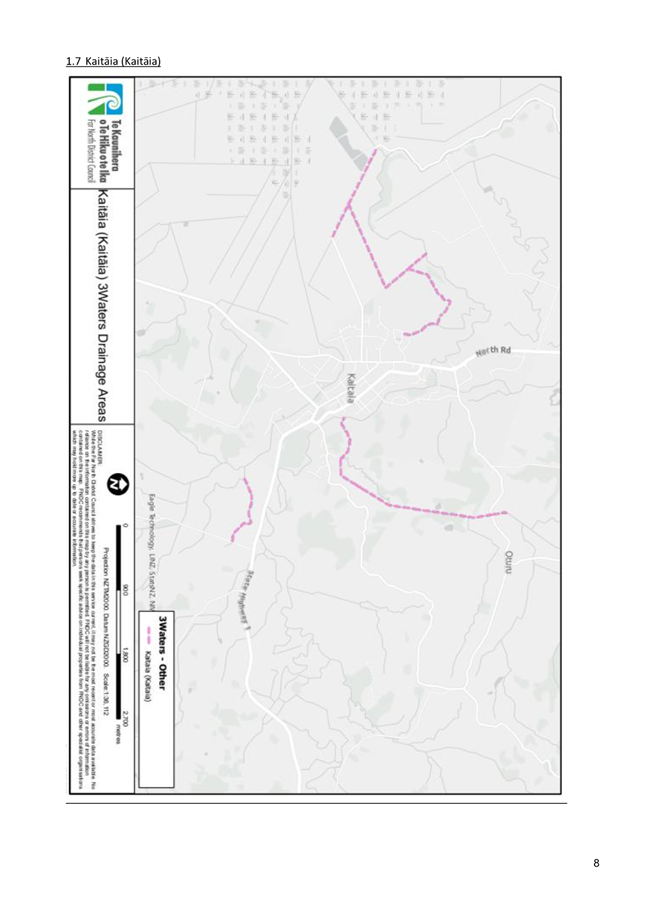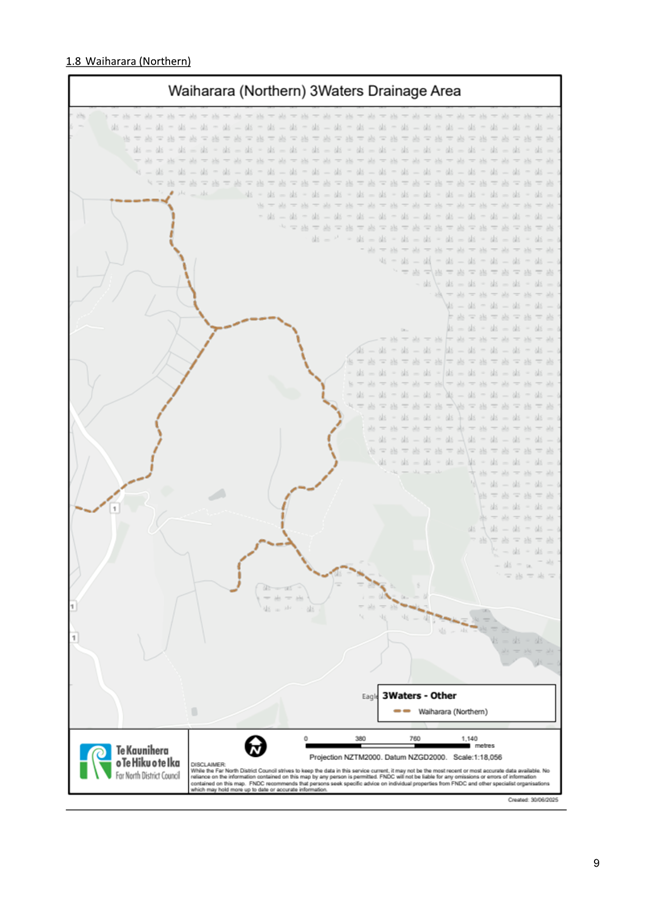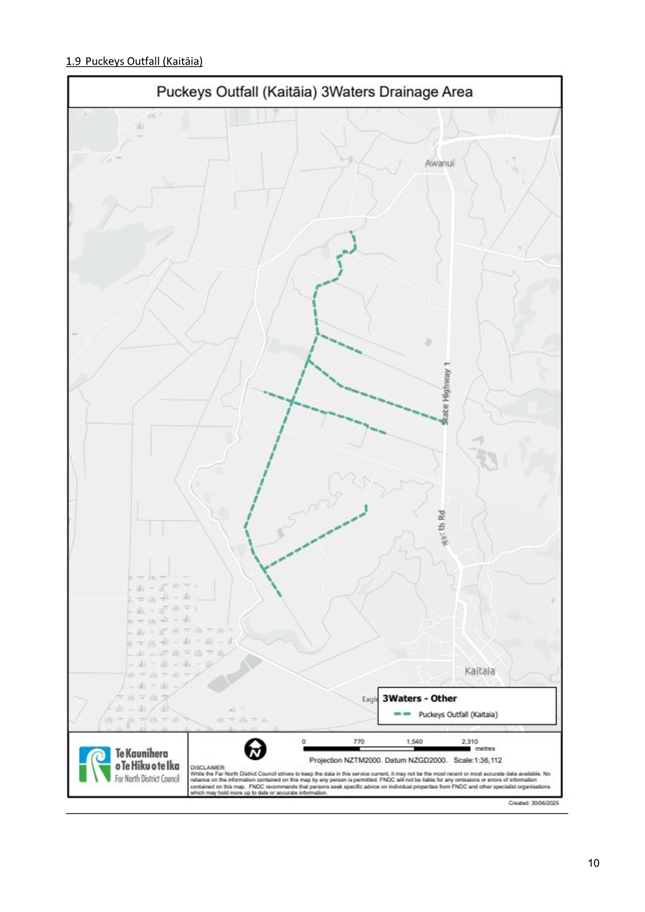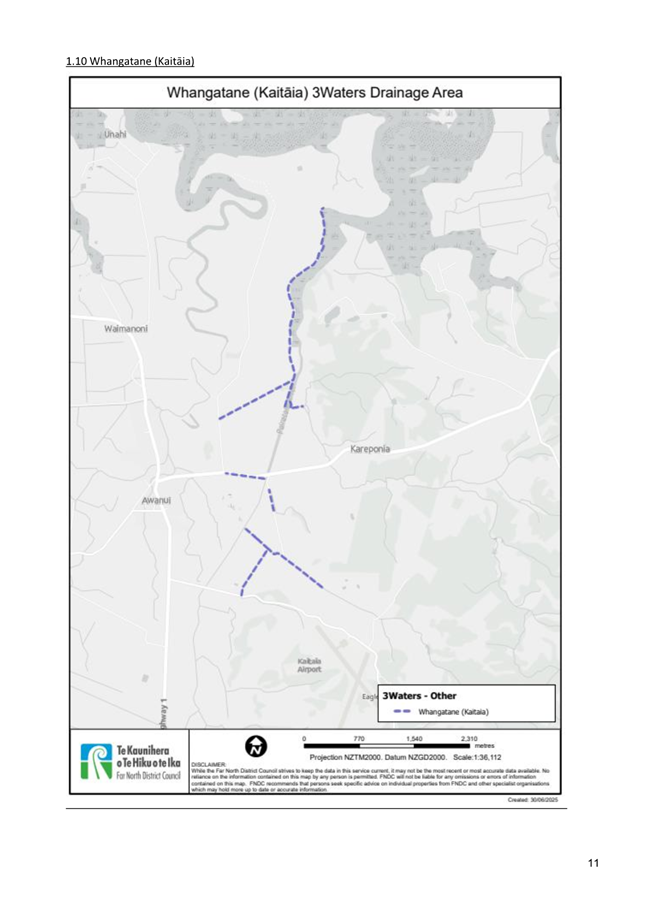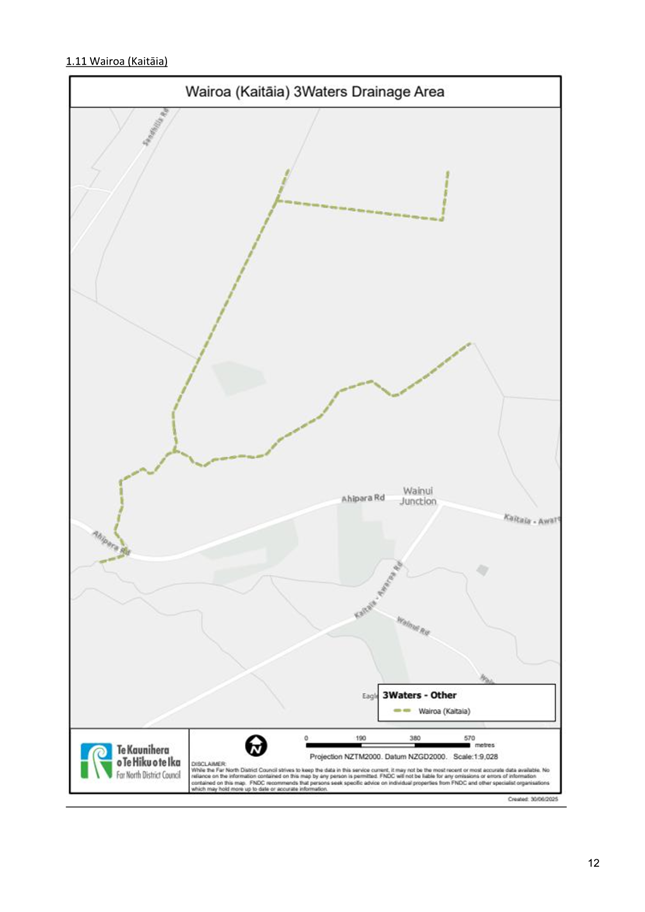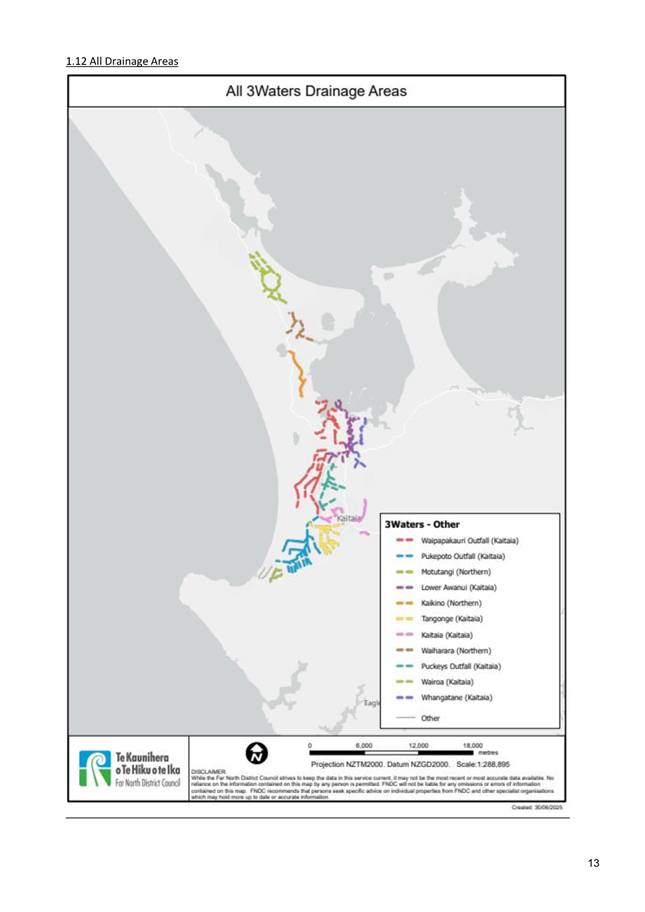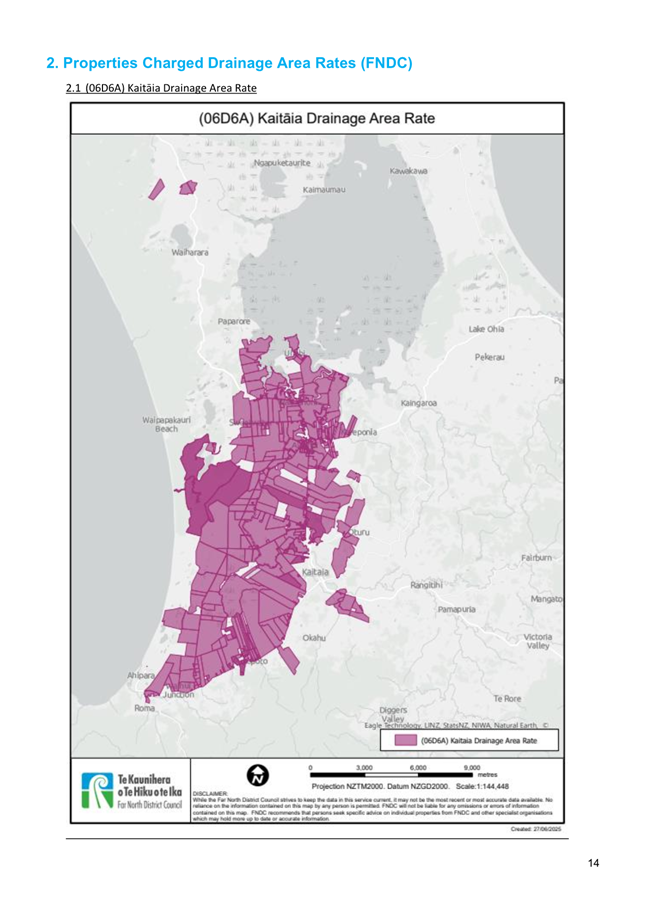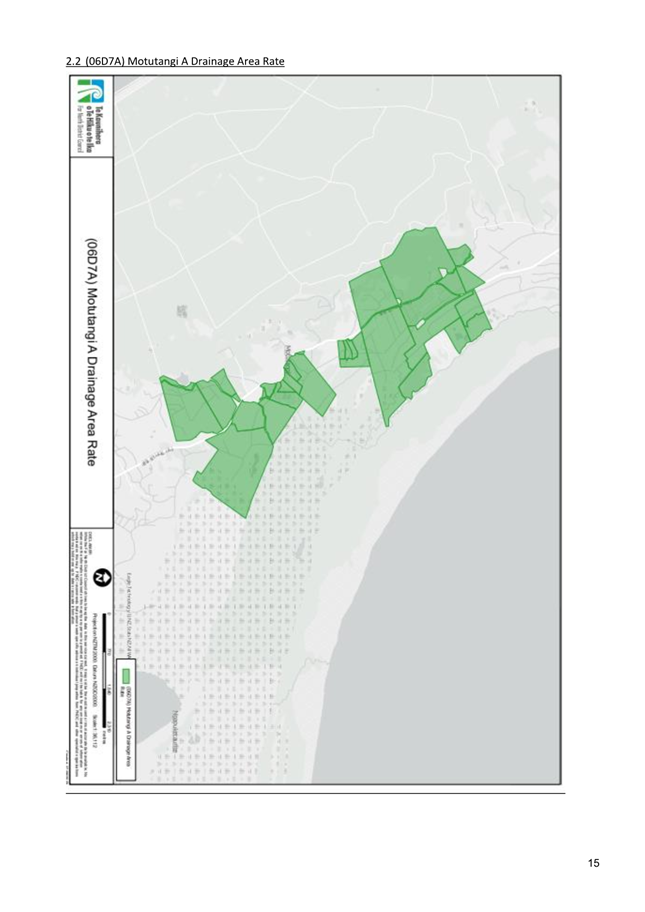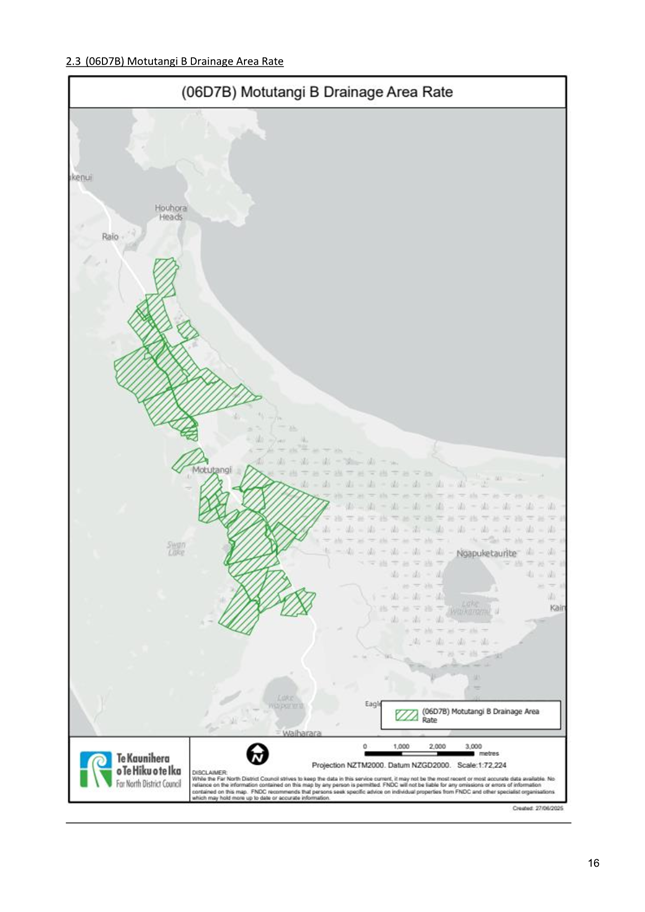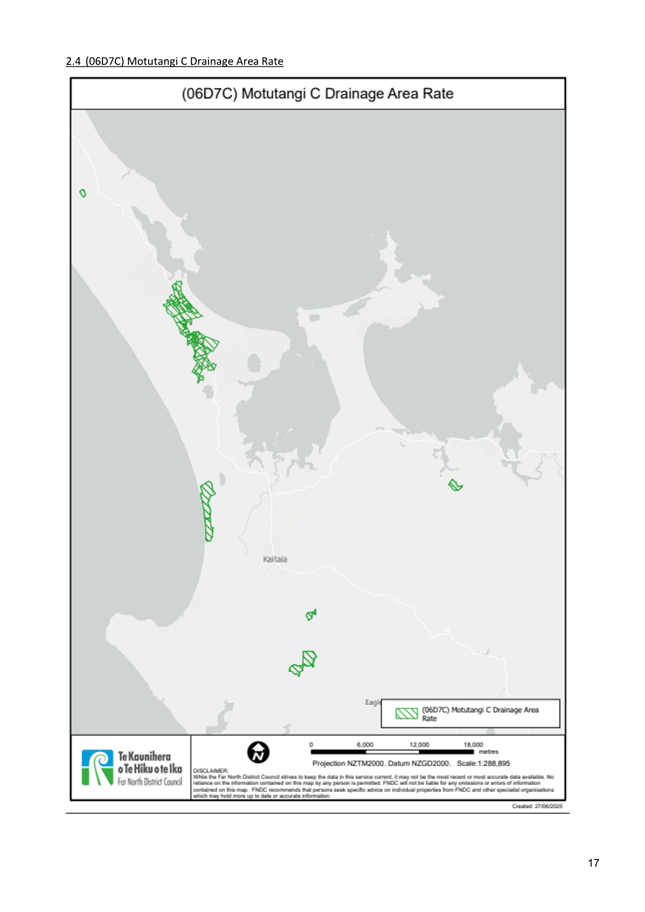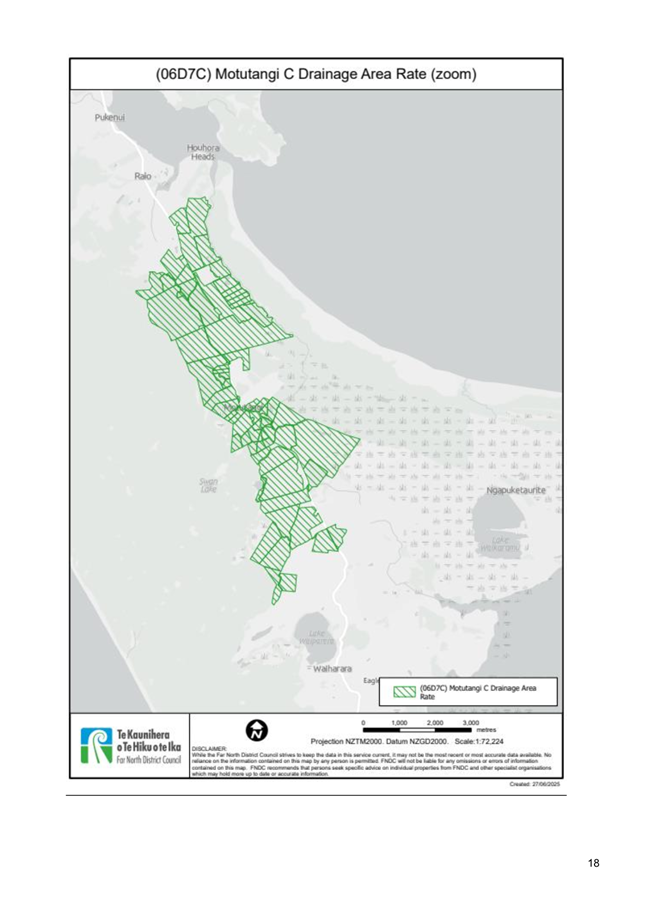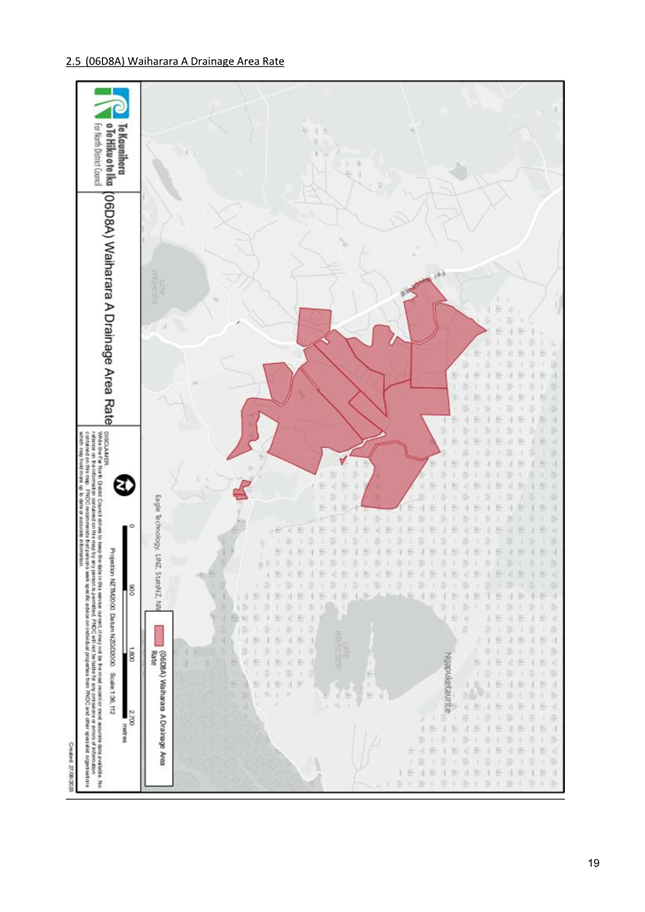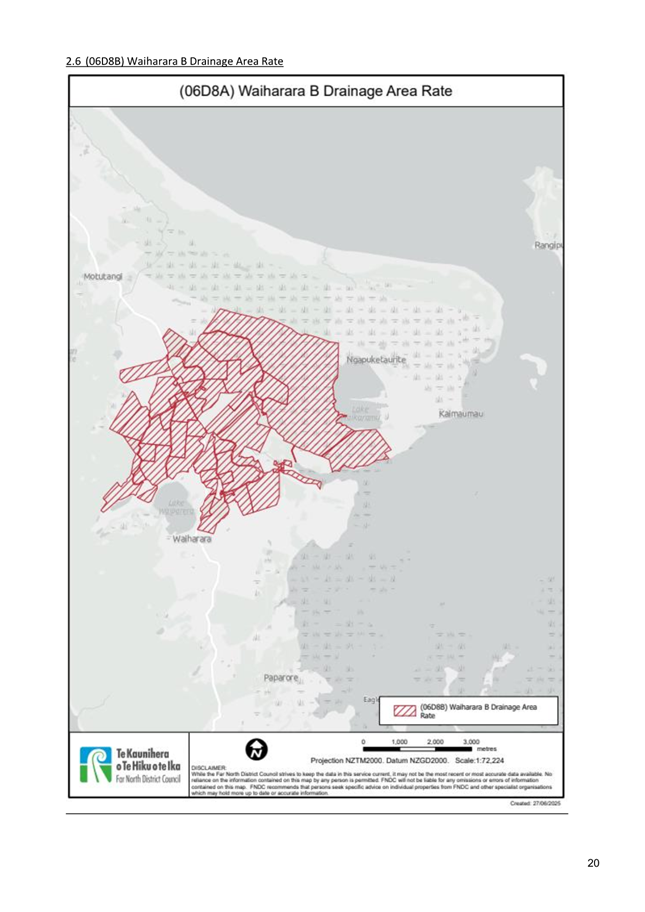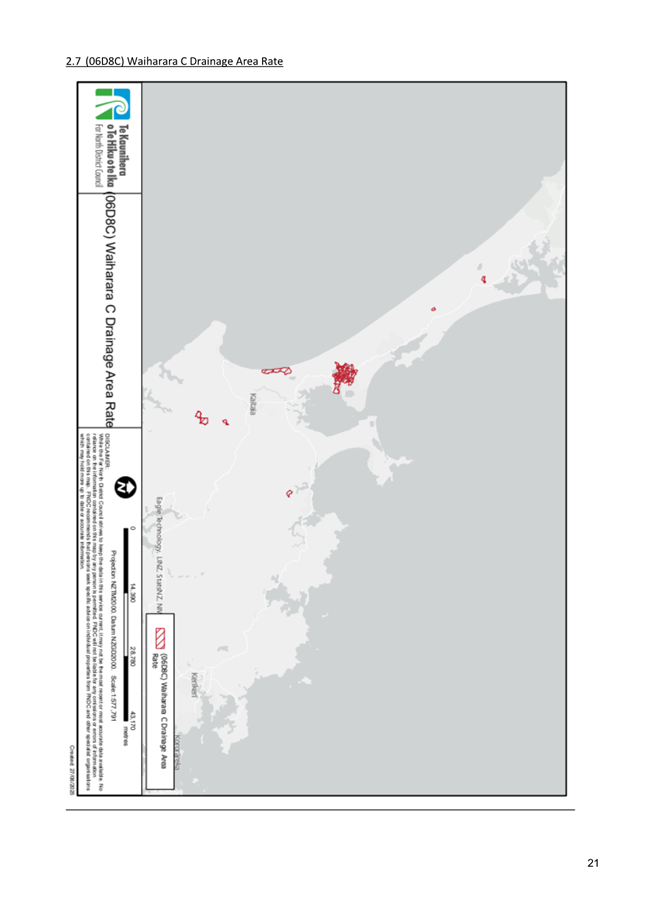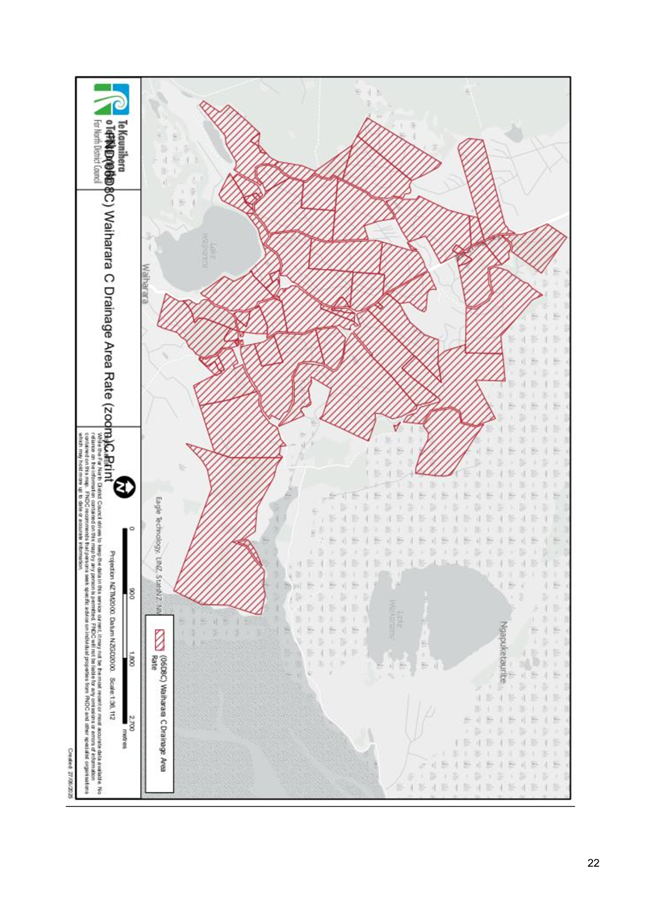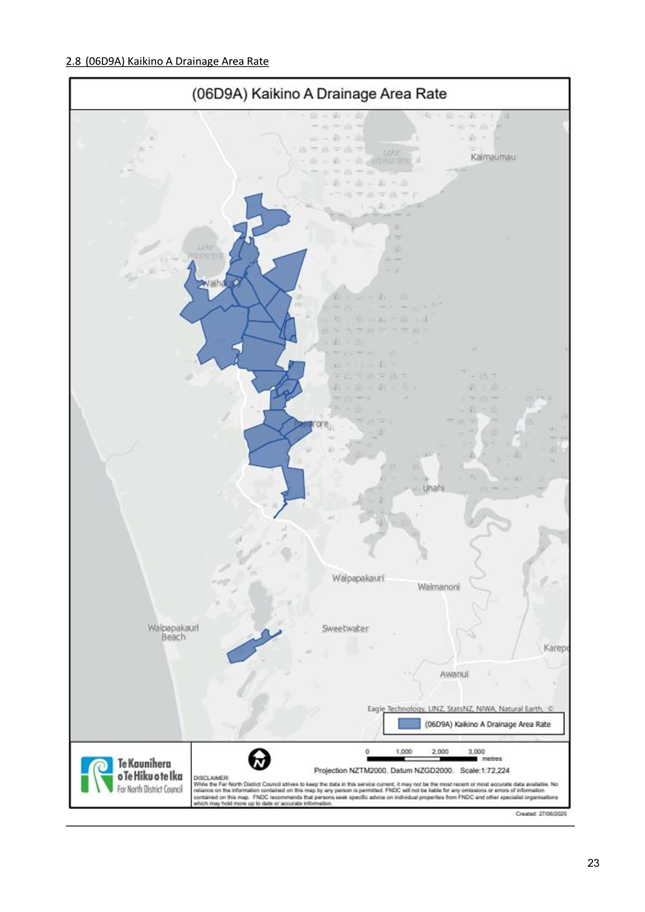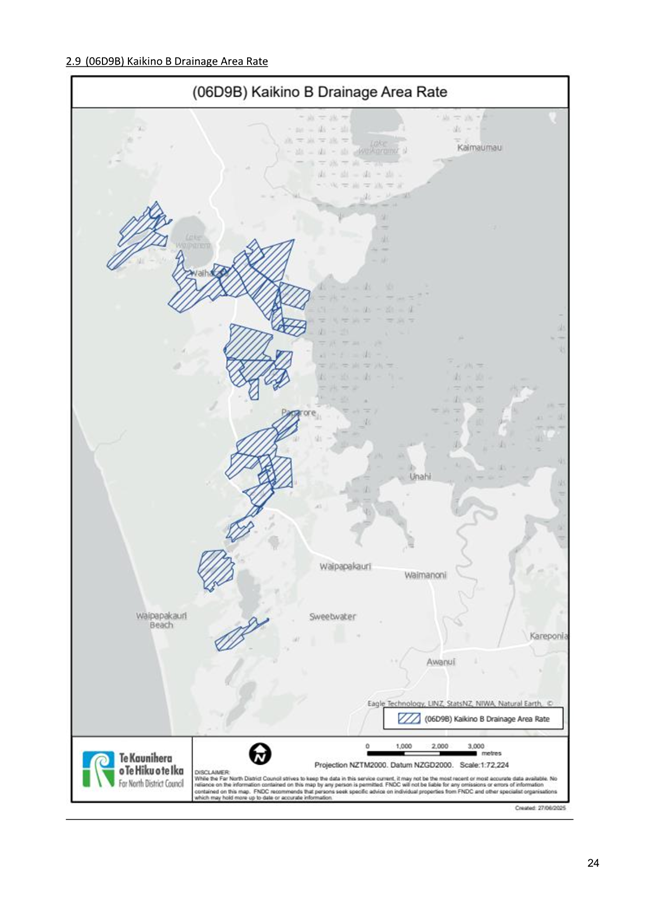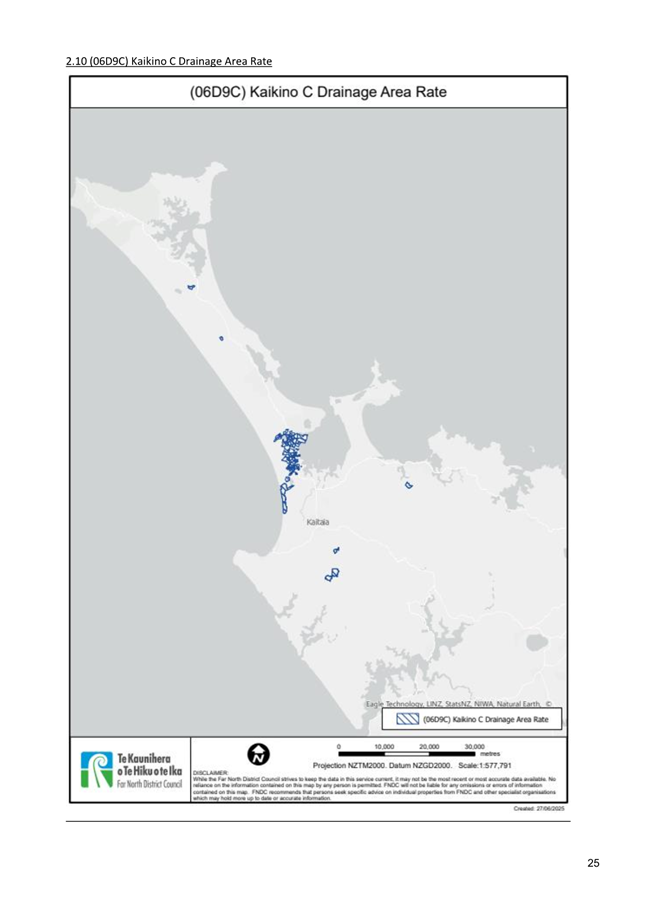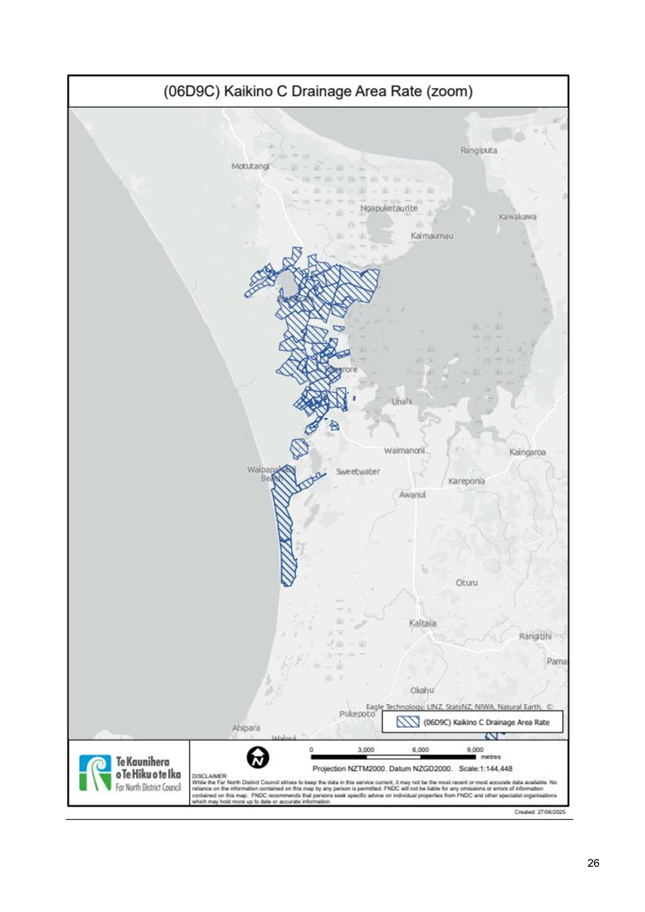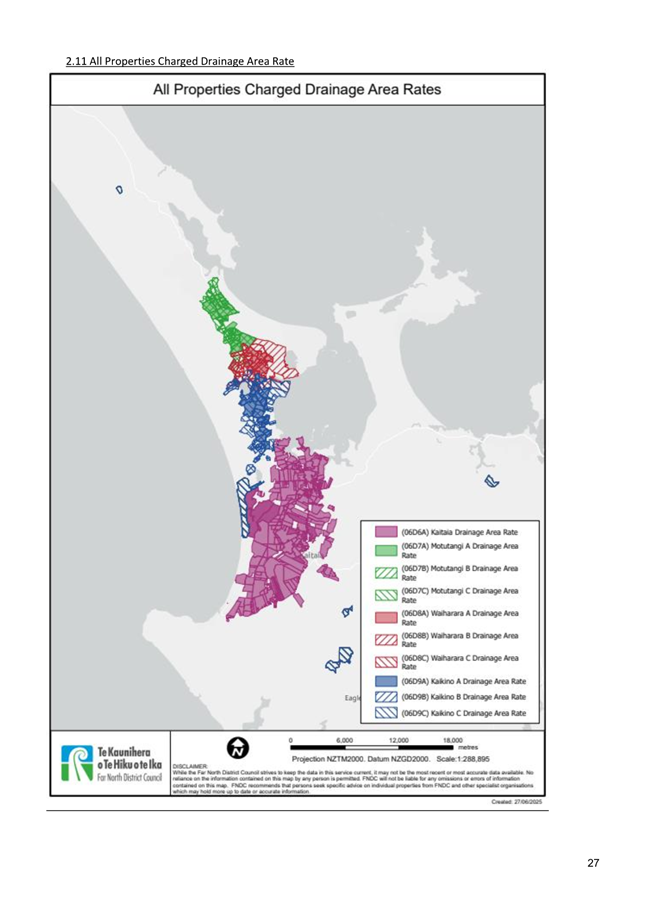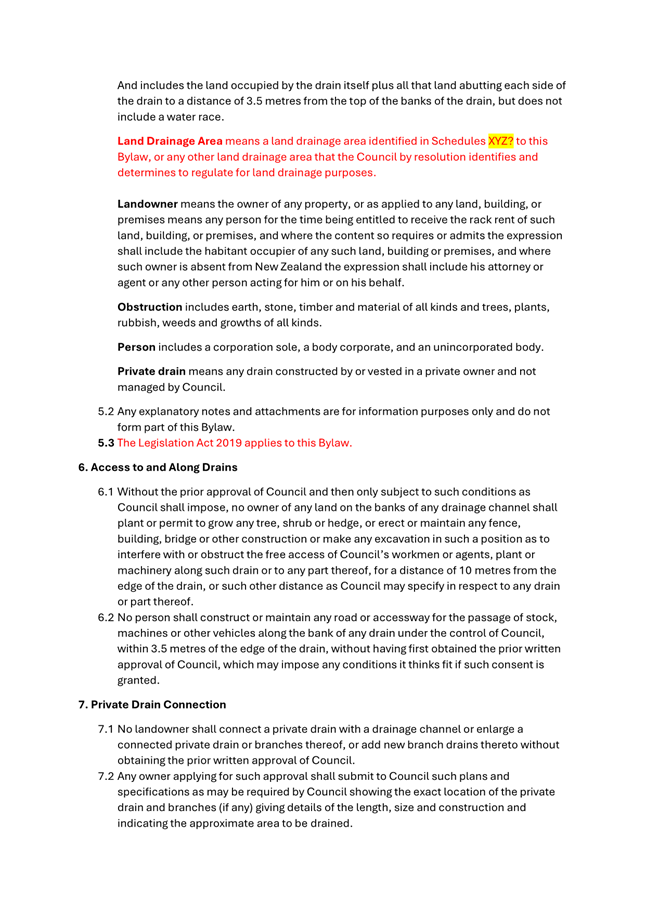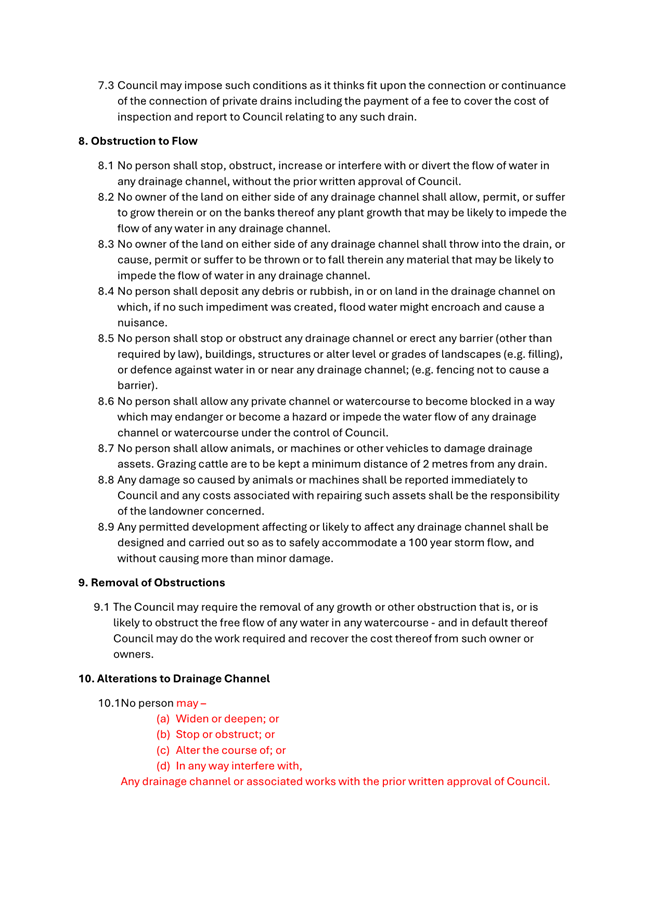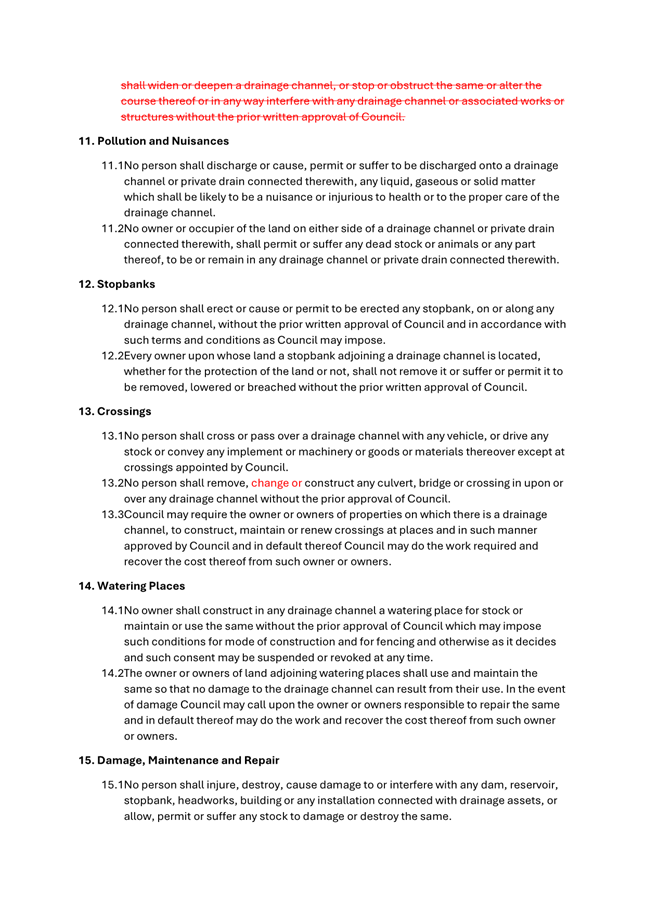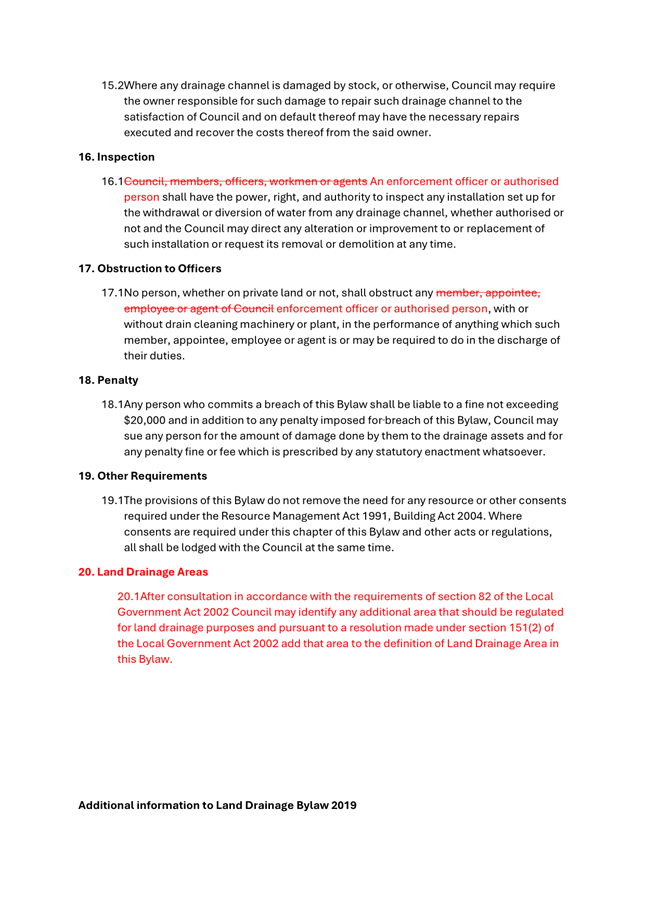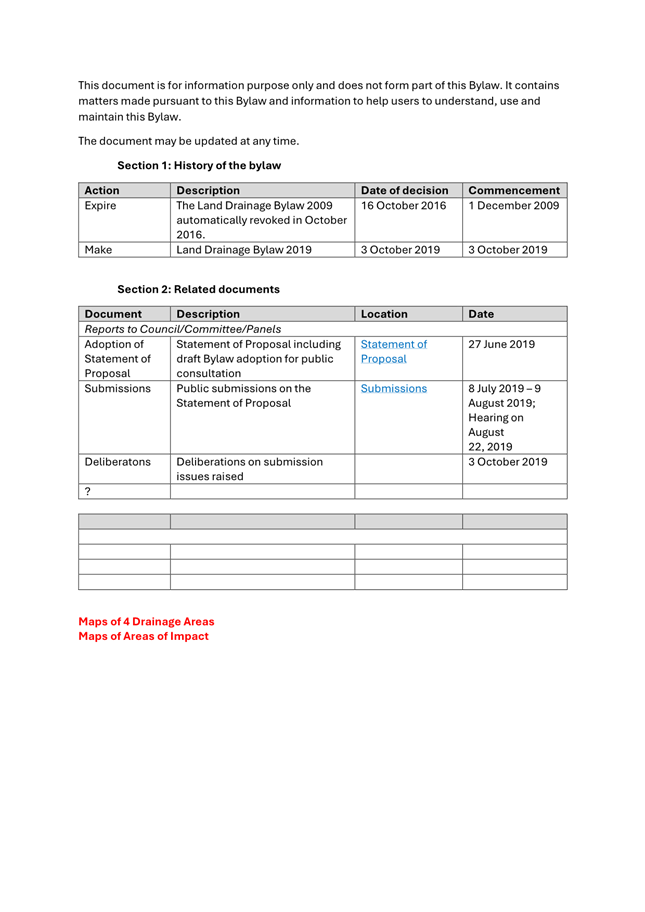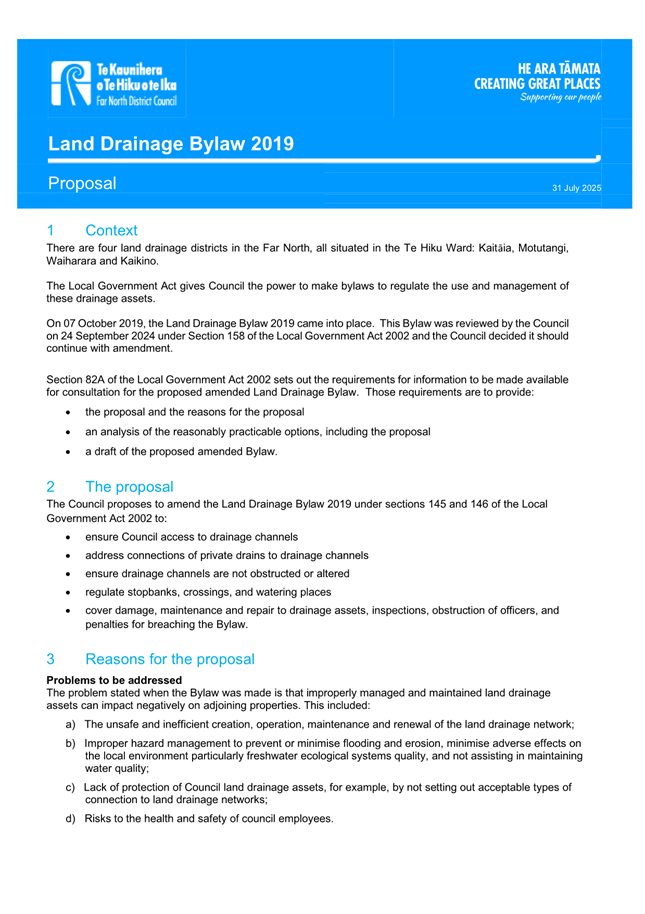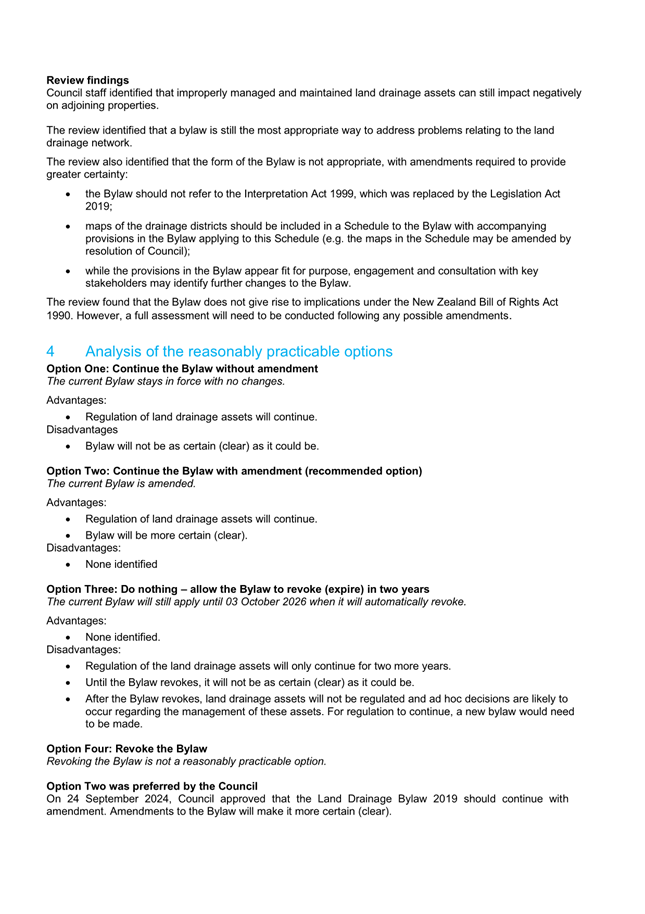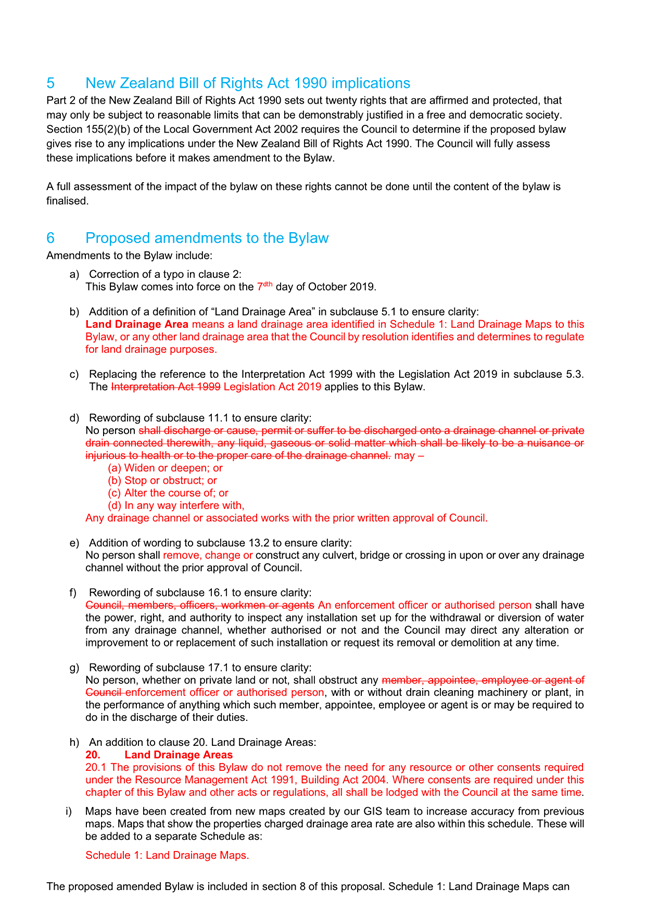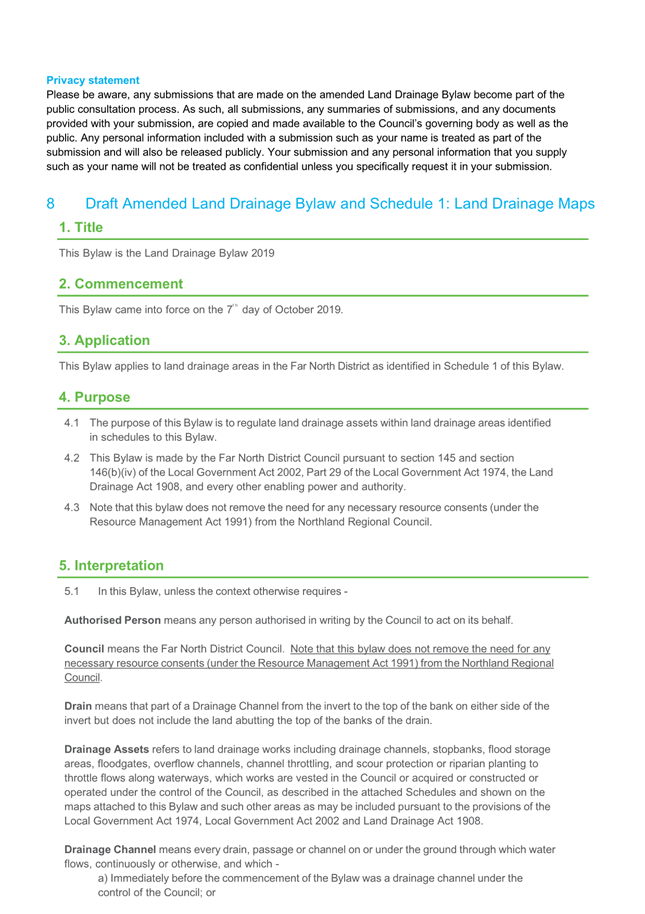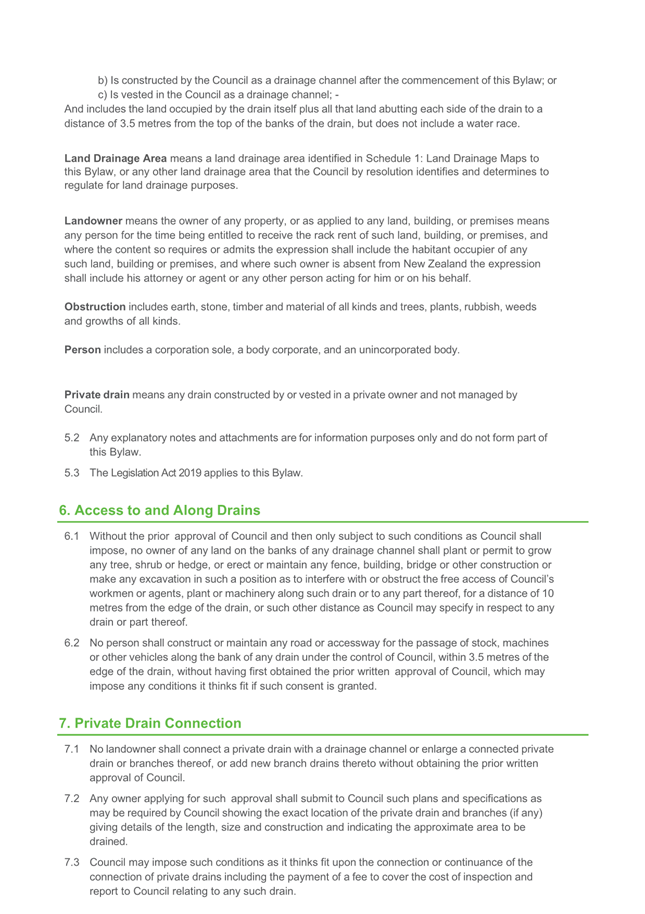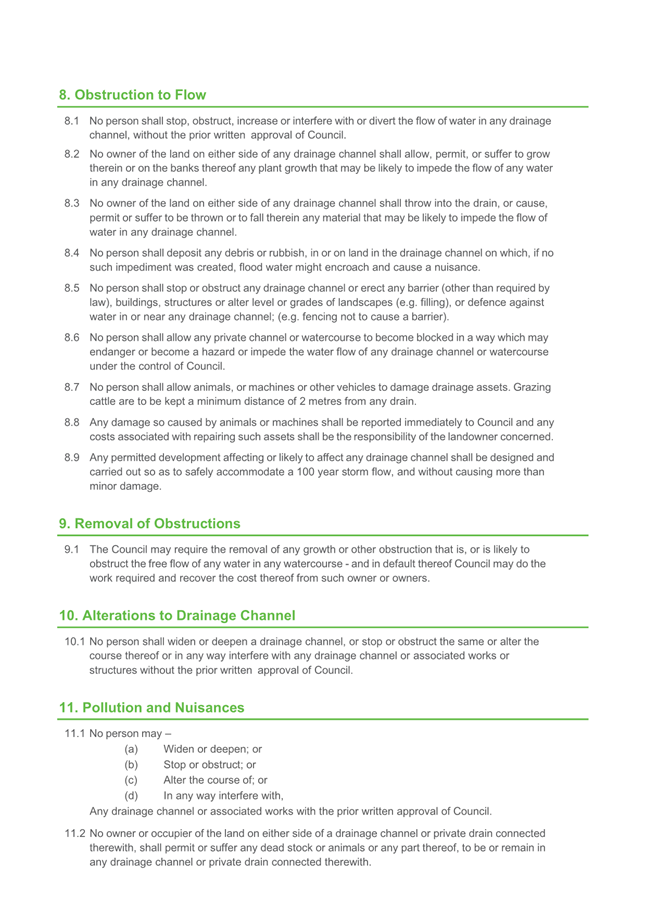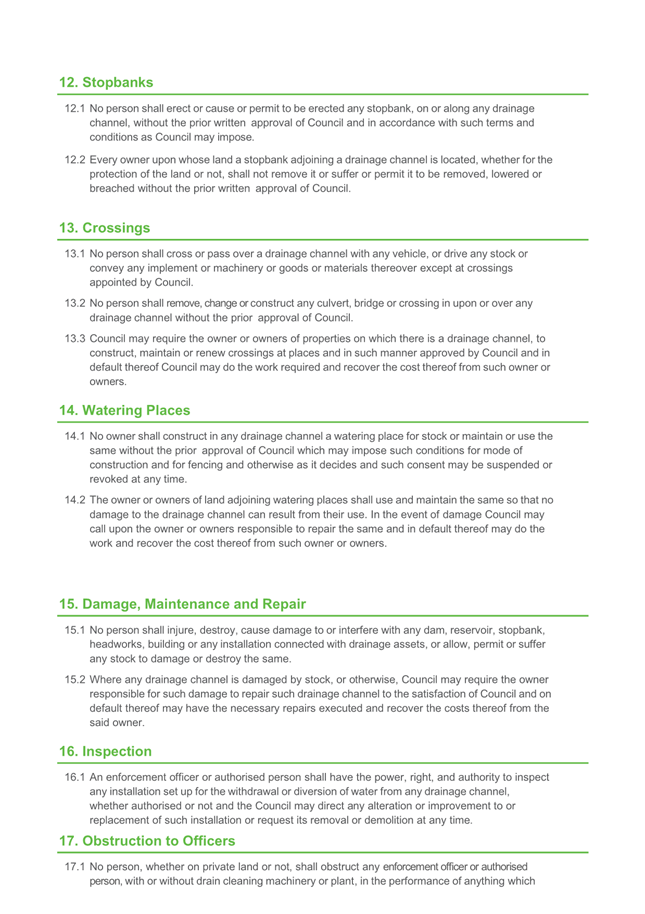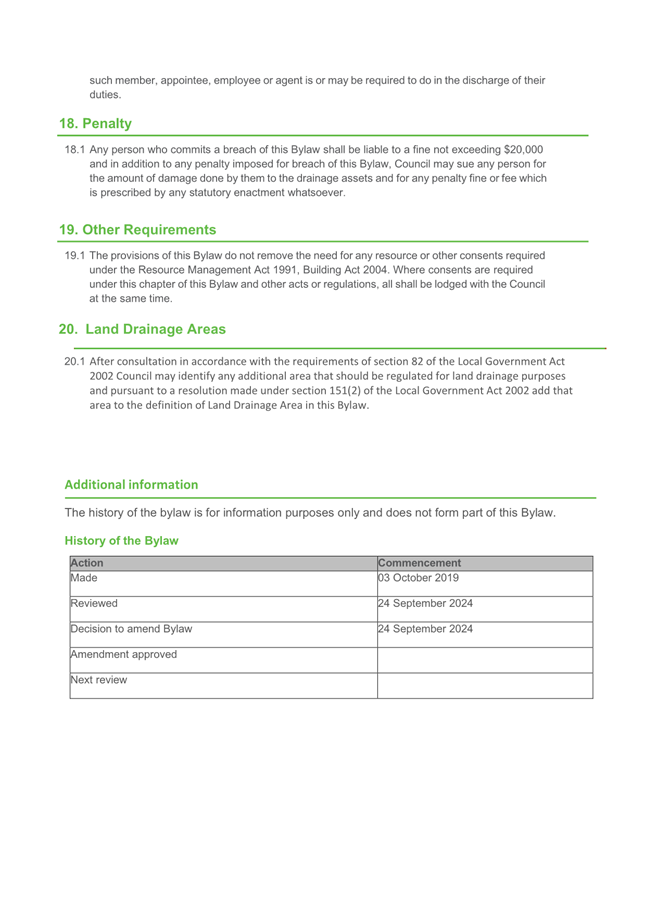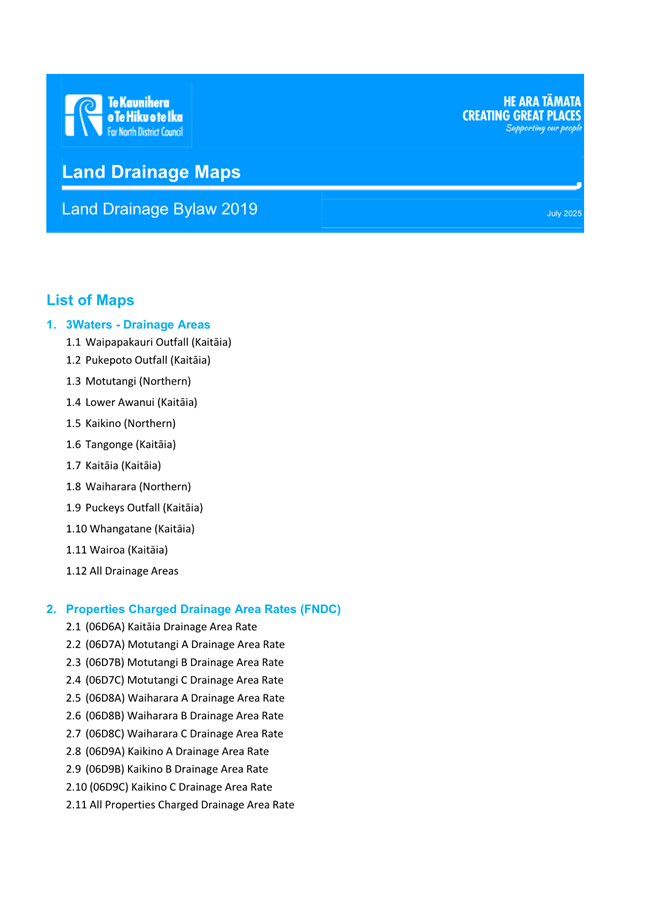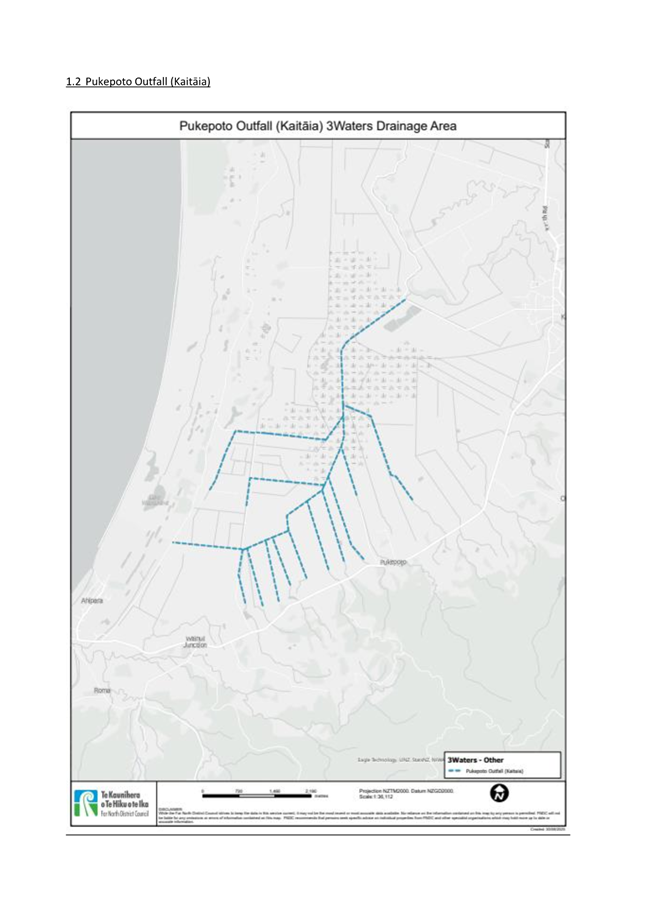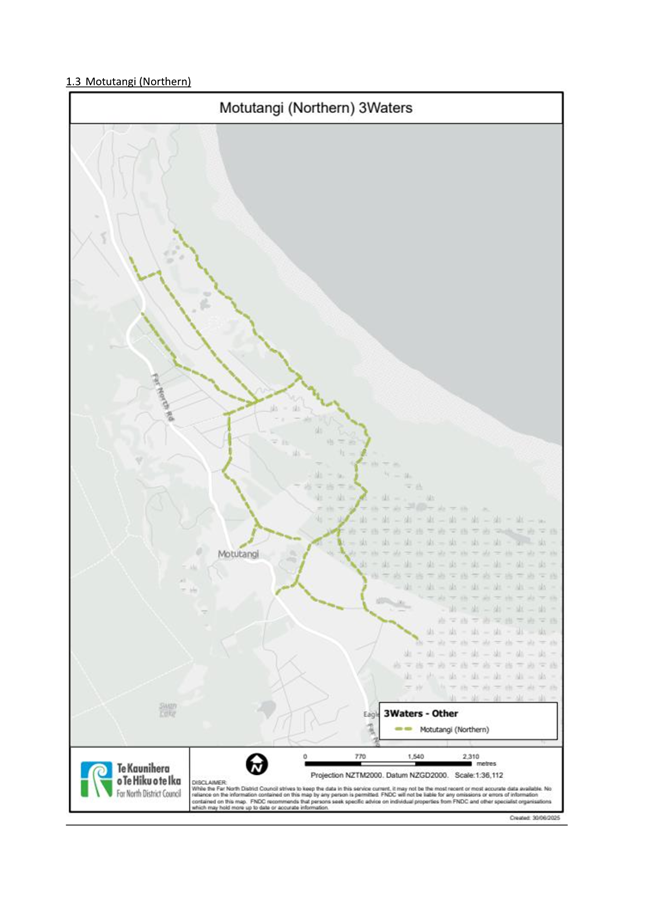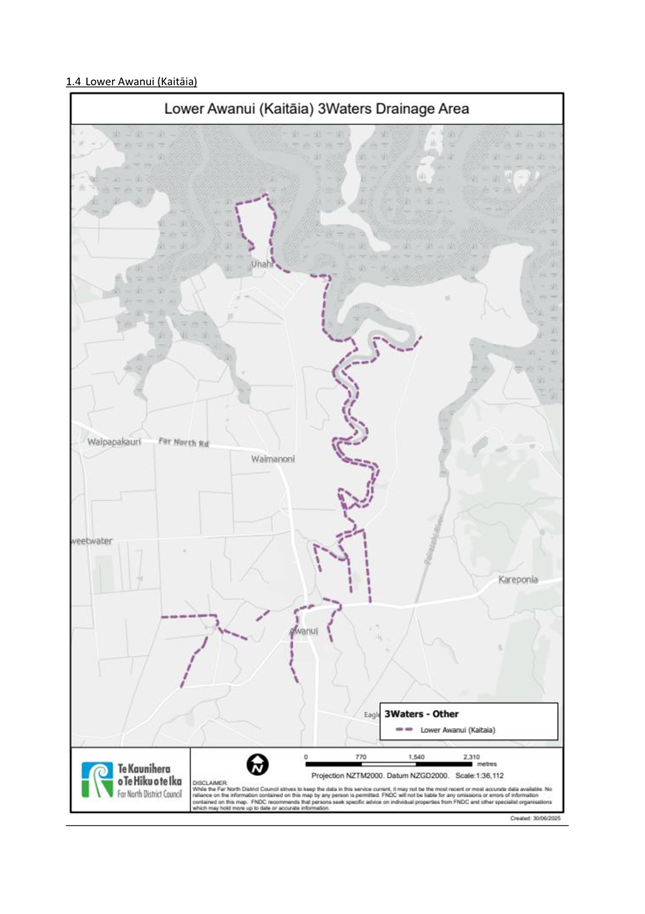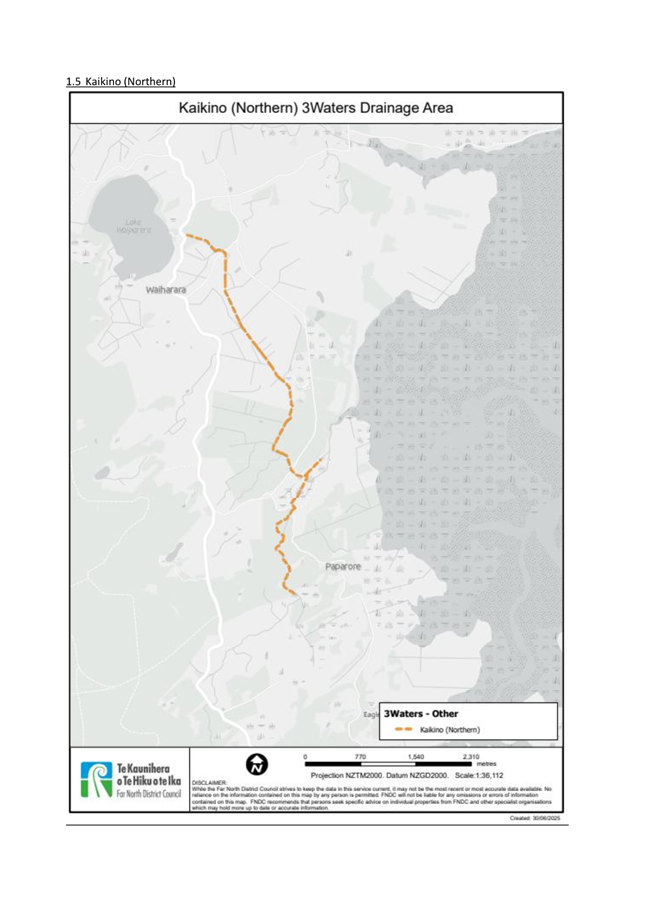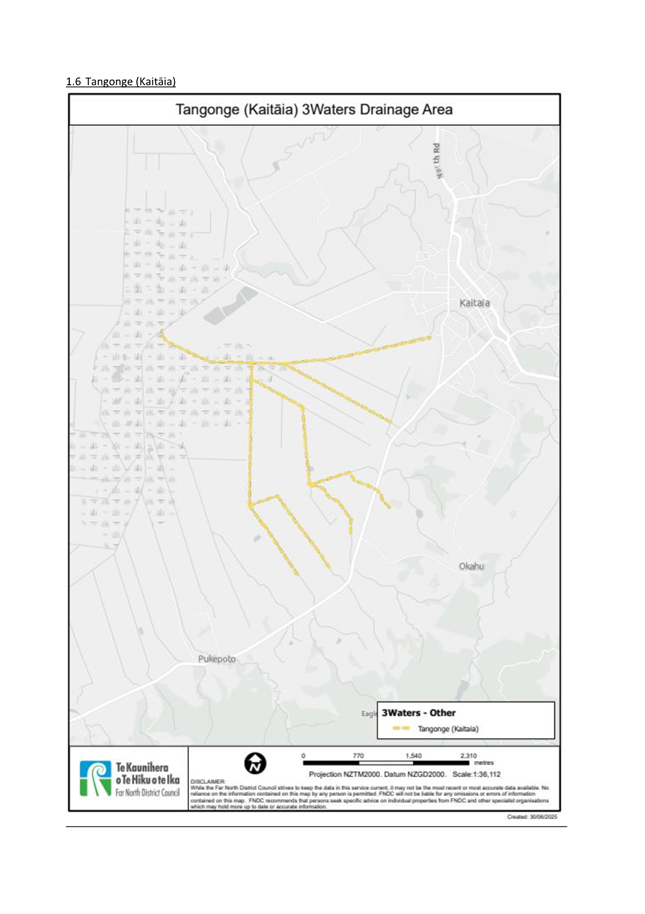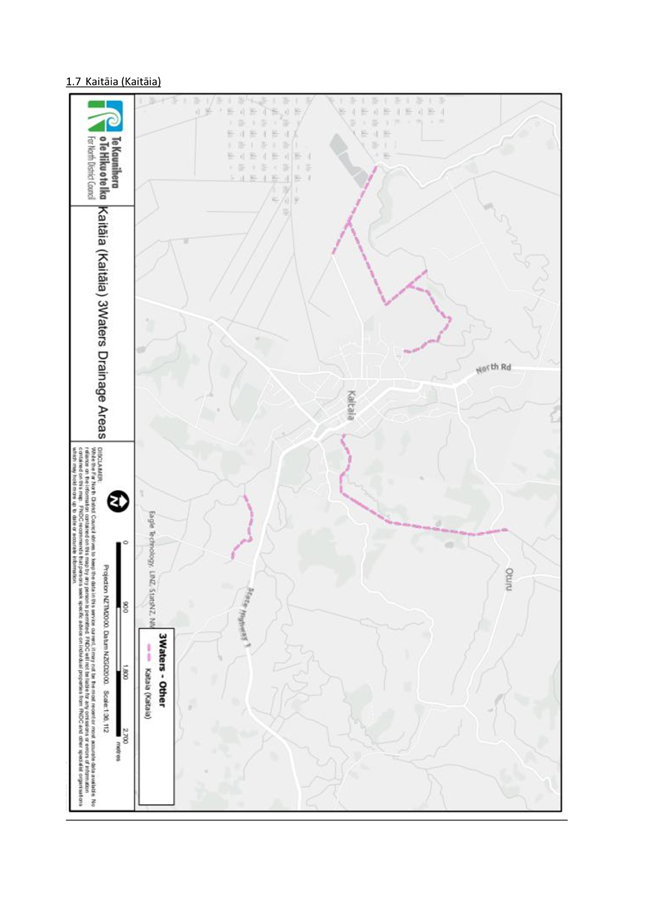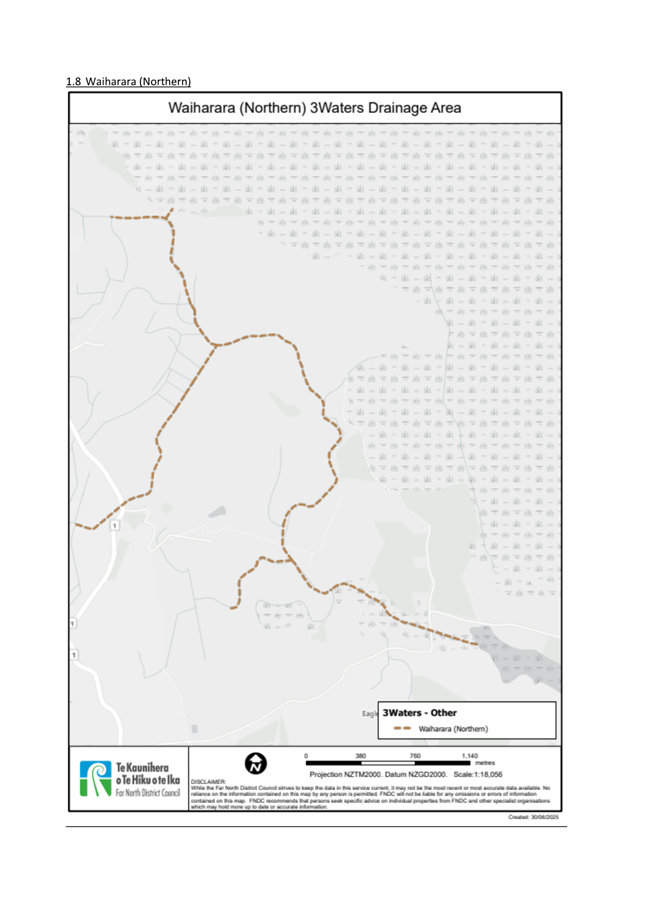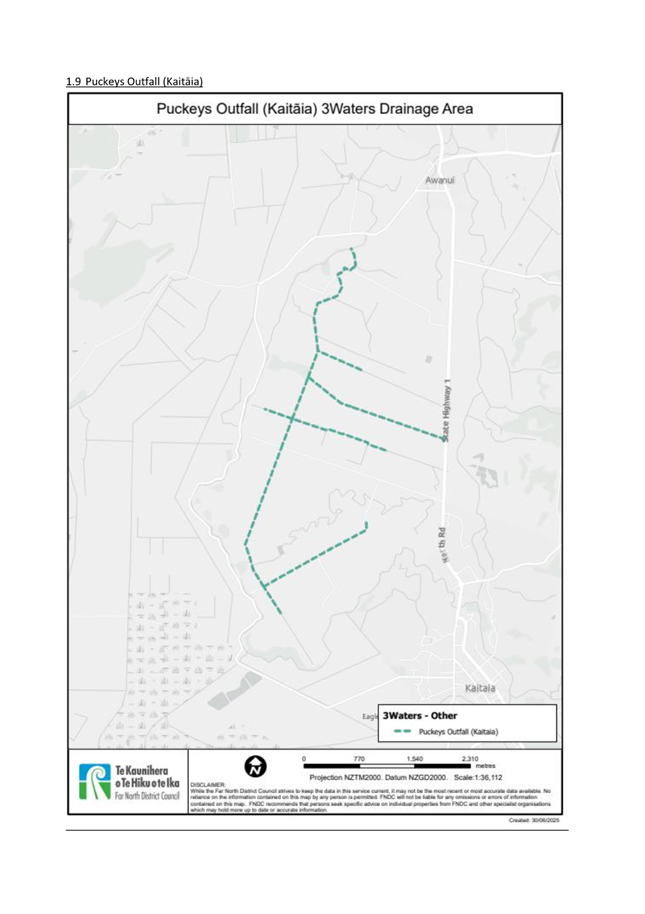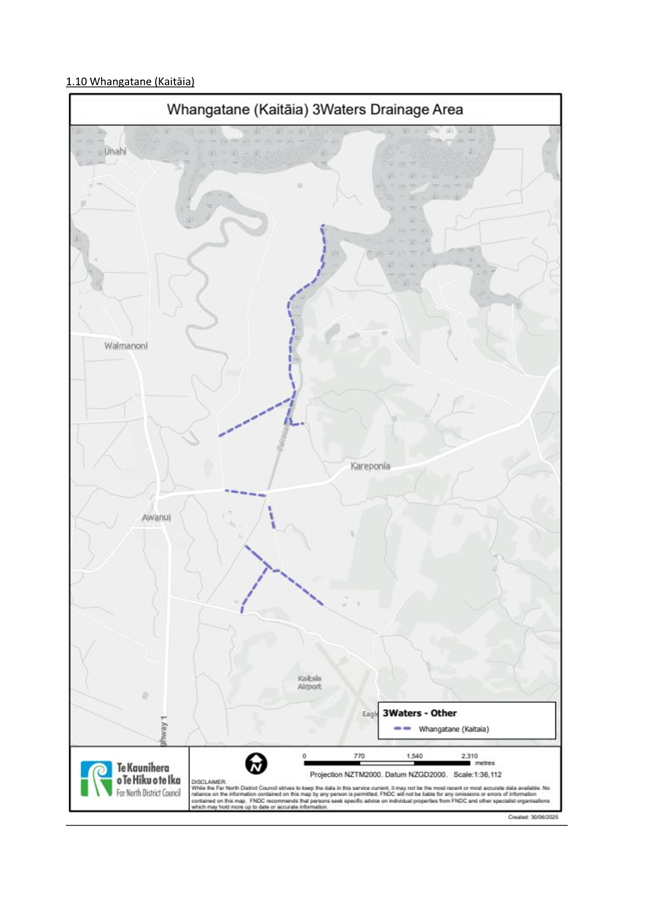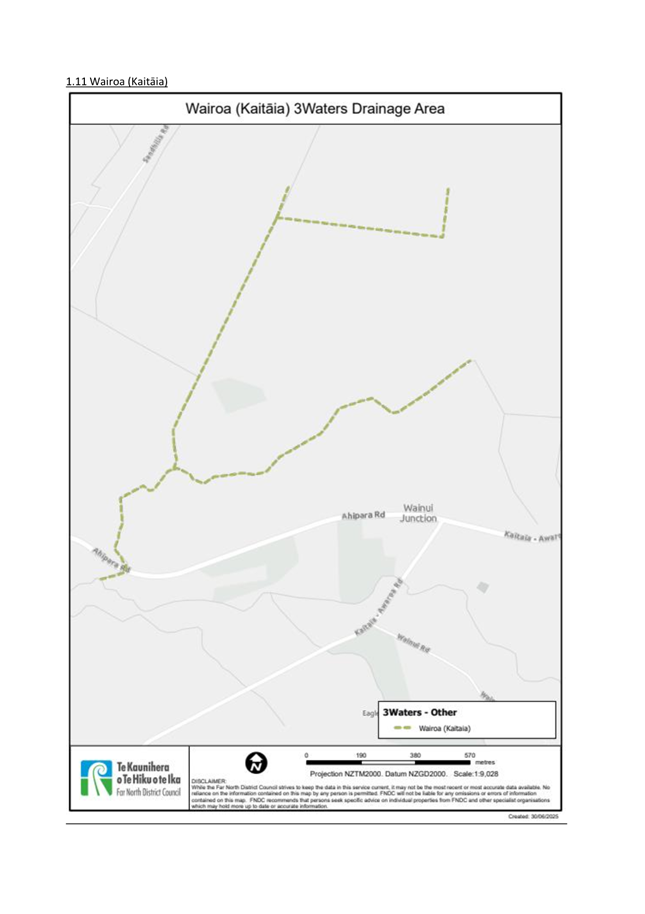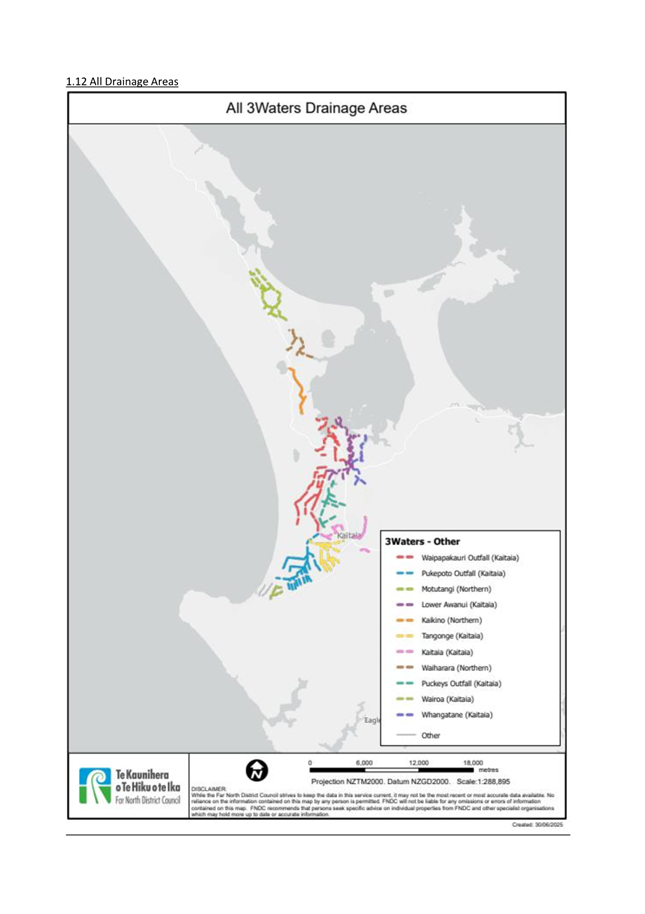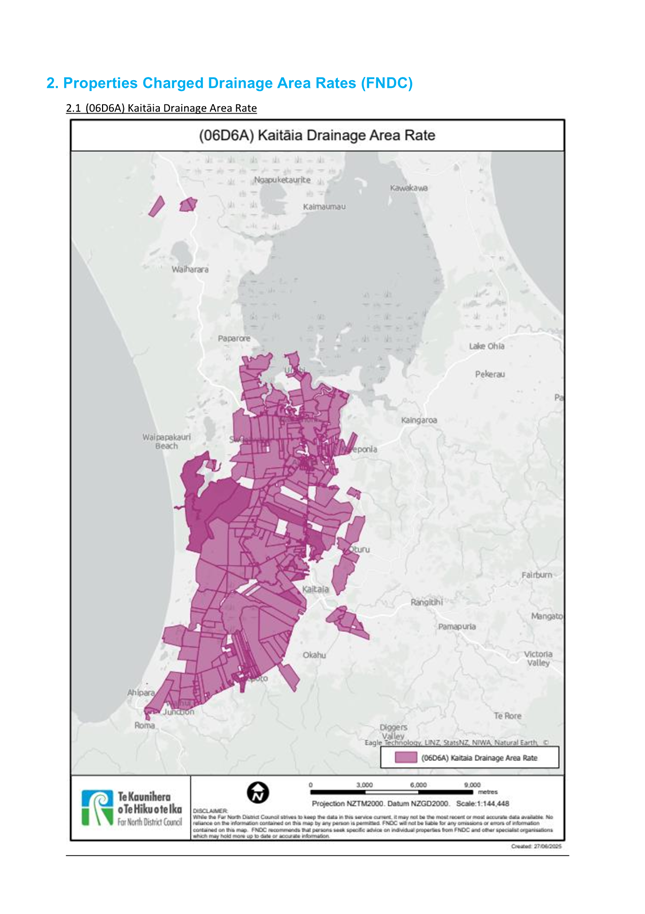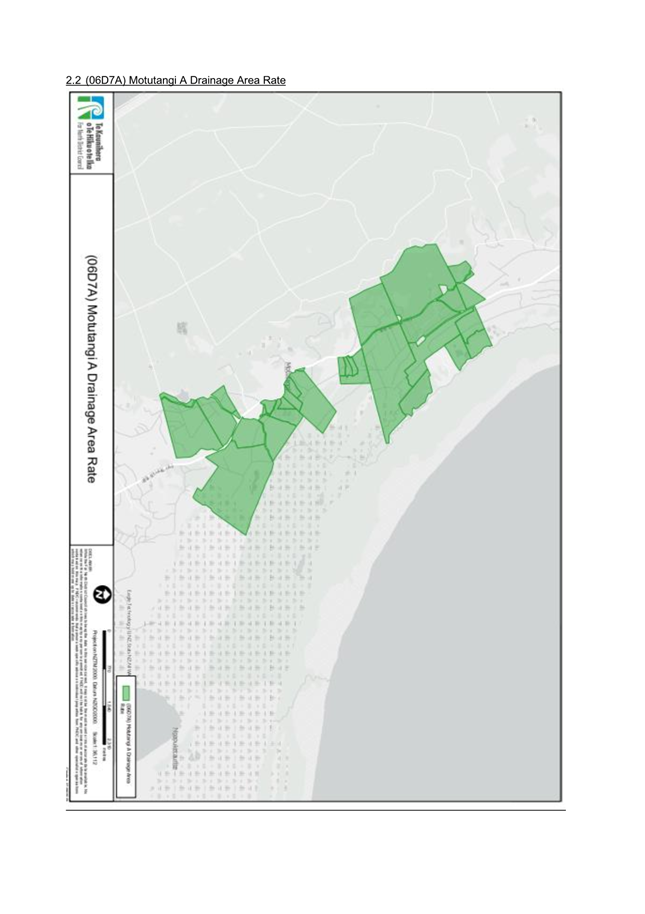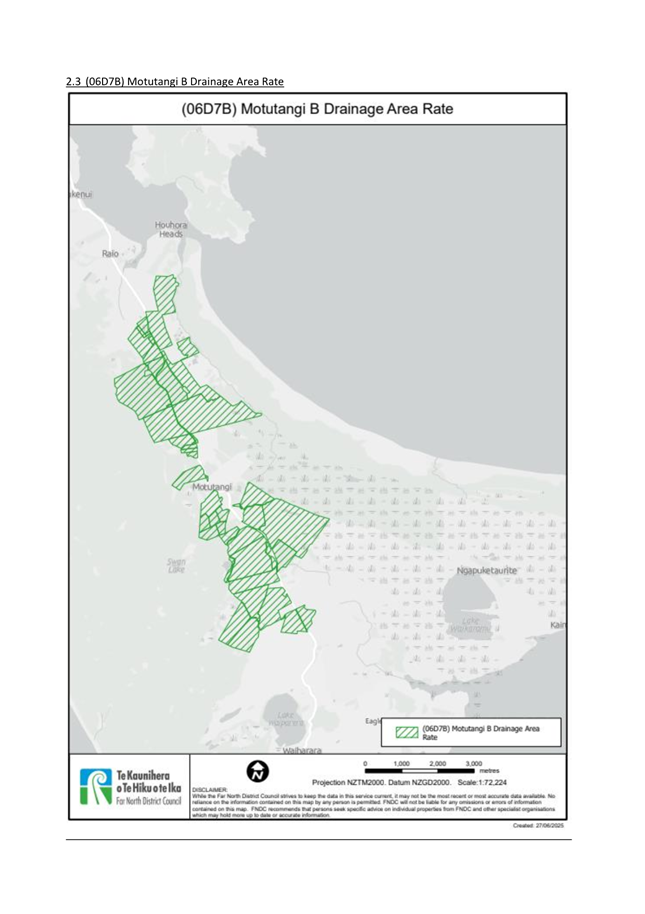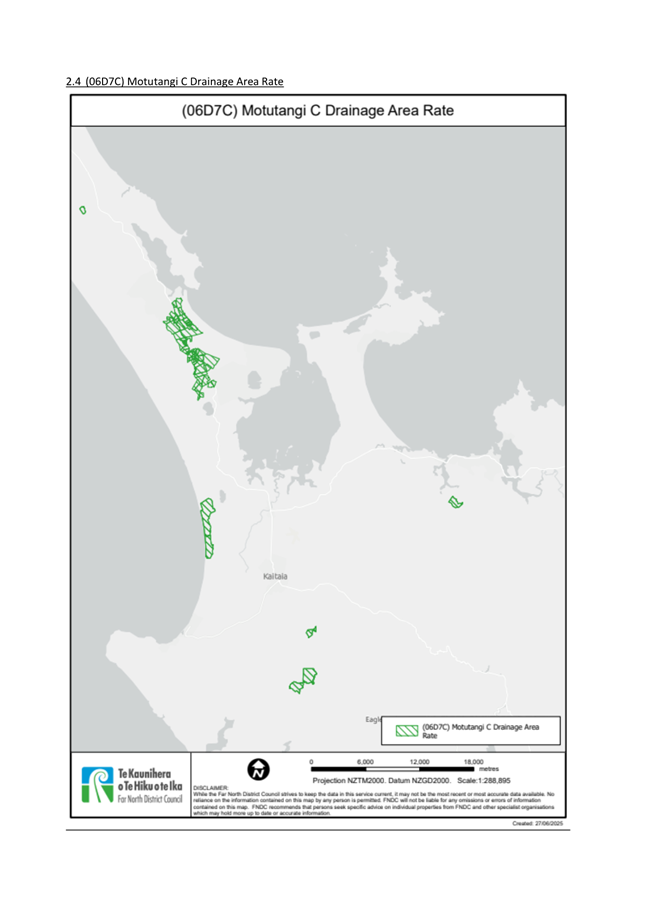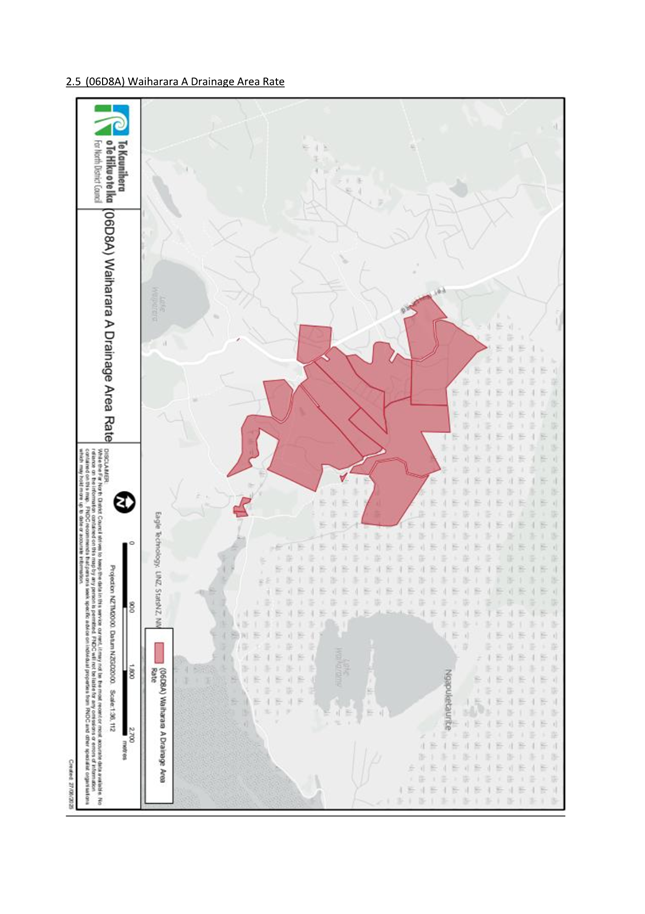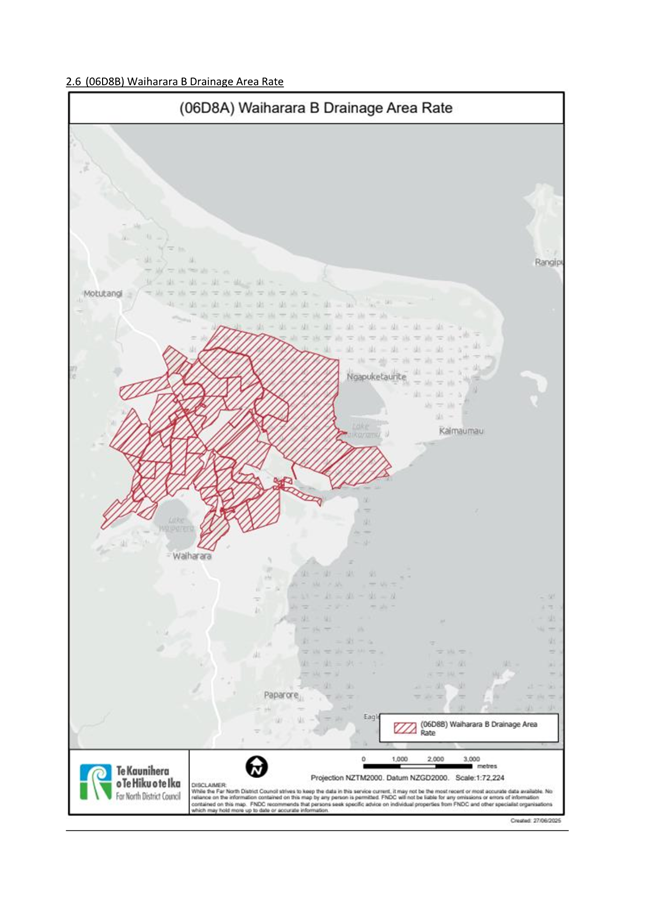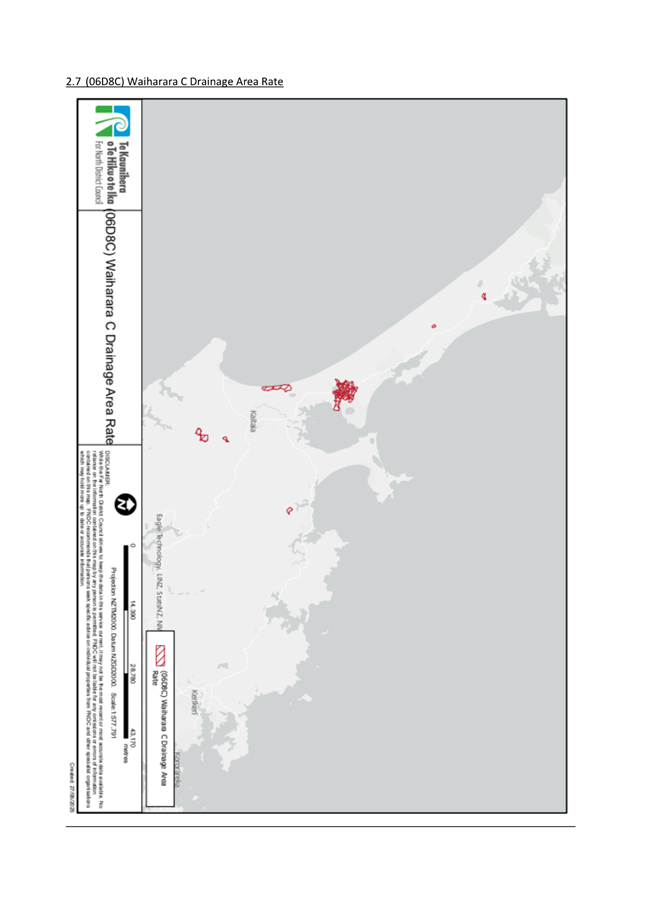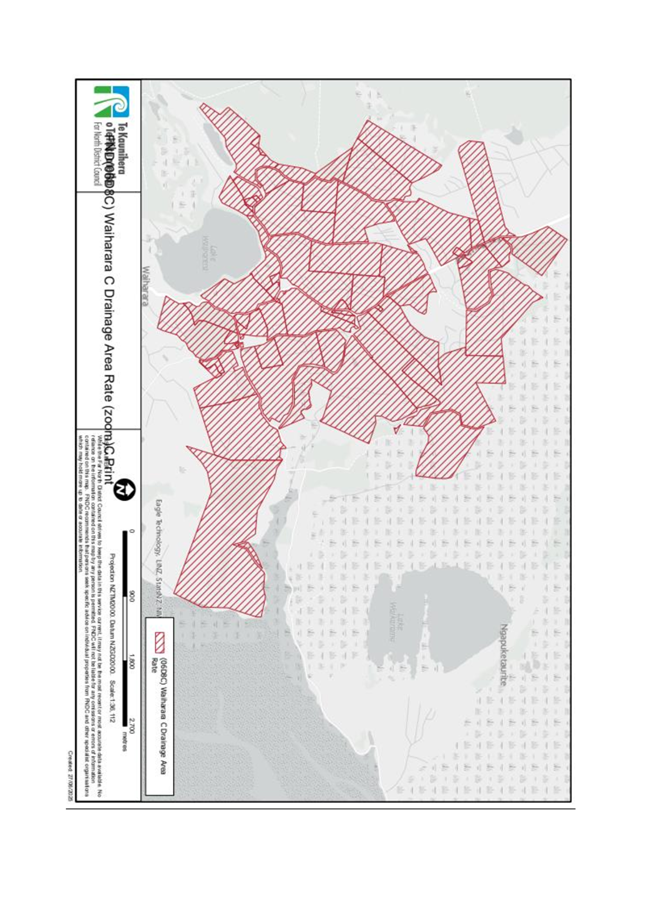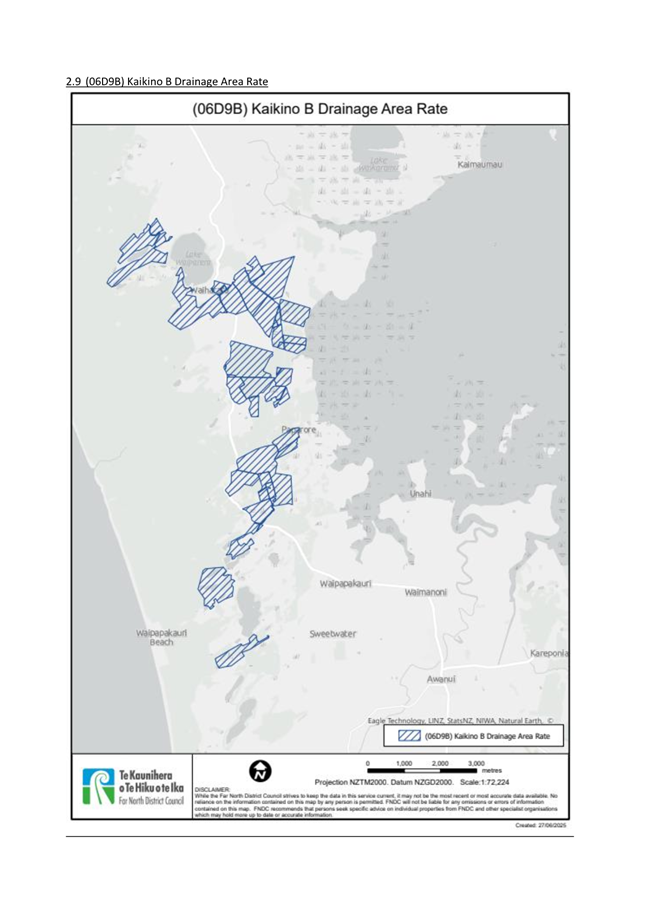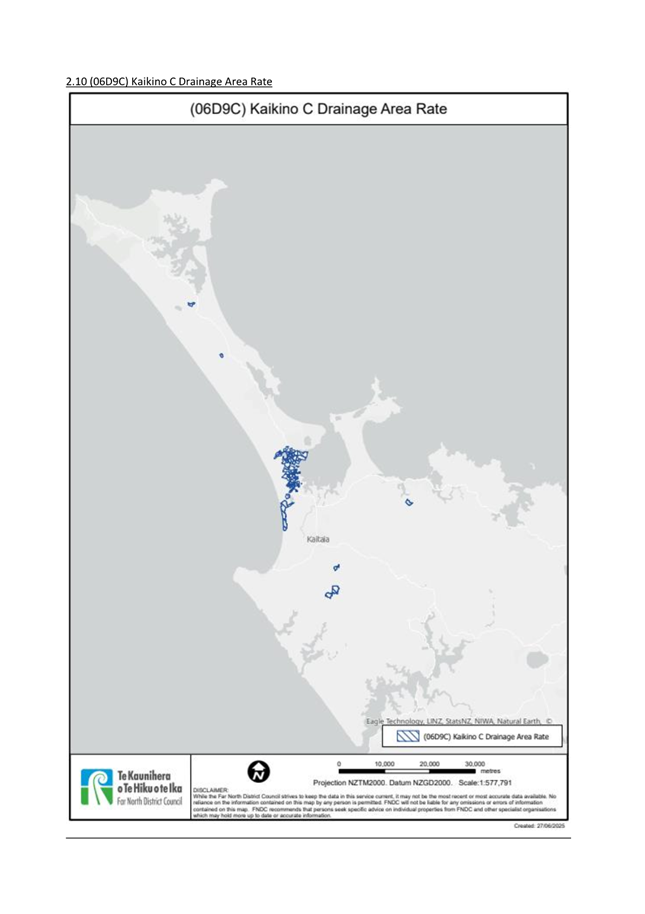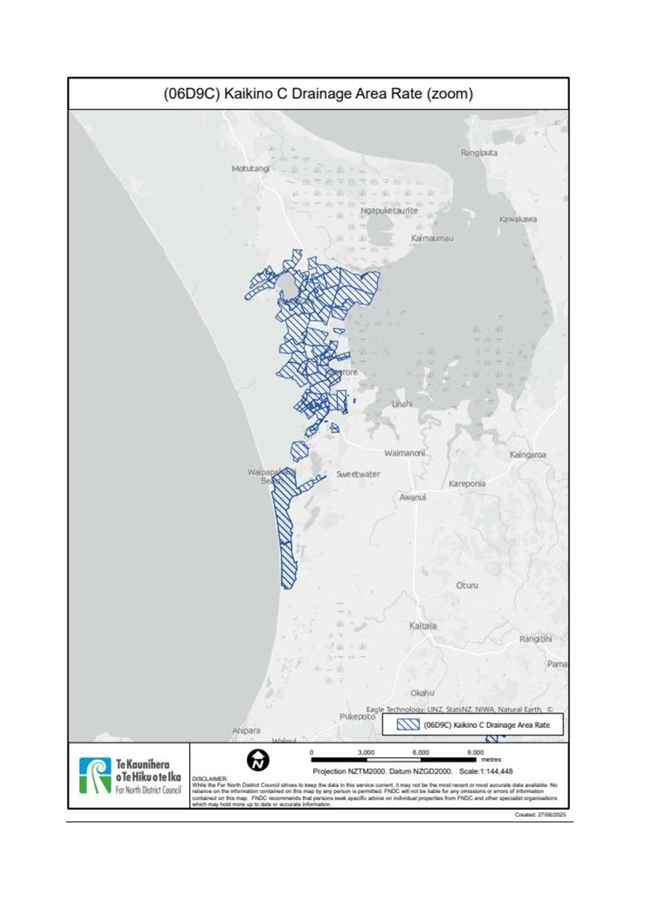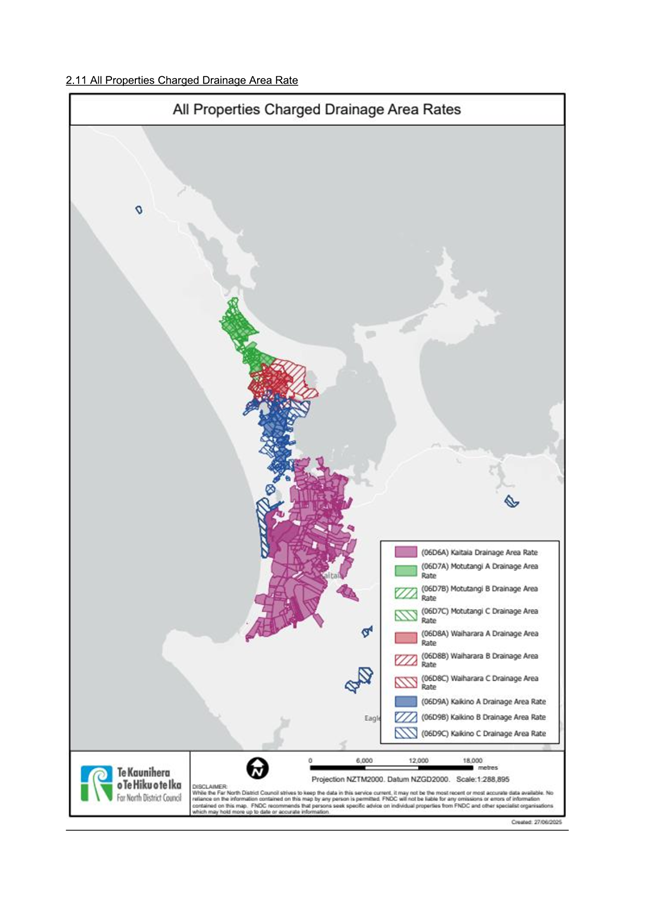7 Ngā
Pūrongo / Reports
7.4 Proposed
Amended Land Drainage Bylaw
File
Number: A5258031
Author: Dan
Bowmar, Policy Advisor
Authoriser: Roger
Ackers, Group Manager - Planning & Policy
Take Pūrongo / Purpose of the Report
To seek approval for Te Hiku Community Board to recommend
that Council approve the amended Land Drainage Bylaw draft for consultation.
WhakarĀpopoto matua / Executive Summary
· There are
four land drainage districts in the Far North, all situated in Te Hiku Ward:
Kaitāia, Motutangi, Waiharara and Kaikino.
· The Local
Government Act 2002 gives Council the power to make bylaws to regulate the use
and management of these drainage assets.
· On 03 October
2019 (Resolution 2019/37 refers), Council made the Land Drainage Bylaw.
· On 24
September 2024 (Resolution 2024/134 refers), the Land Drainage Bylaw 2019 was
reviewed by Council under Section 158 of the Local Government Act 2002 and
Council approved the Land Drainage Bylaw 2019 to continue with amendment.
· Section 160 (3)(a) of the Local Government Act 2002 requires that
Council consult with the public when amending a bylaw.
· A draft of the amended Land Drainage Bylaw 2019 is in Attachment 1.
· The recommended consultation period is between 01 August and 29
August 2025. Oral submissions will follow.
|
tŪtohunga
/ Recommendation
Te
Hiku Community Board recommend that Council:
a) adopt the proposal
in attachment 4 to be released for public consultation to meet the
requirements of section 82 of the Local Government Act 2002.
b) approve,
the period for making written submissions on the proposal will be a minimum
of 4 weeks.
c) delegate
authority to the Mayor to decide on the date of oral presentation/s of
submissions.
d) authorise
the Chief Executive to make any necessary minor drafting or presentation
amendments to the proposal to correct errors or omissions, or to reflect the
decisions made by the Council prior to final publication and public release.
|
1) TĀhuhu kŌrero / Background
There are four land drainage
districts in the Far North, all situated in Te Hiku Ward: Kaitāia,
Motutangi, Waiharara and Kaikino.
Sections 145 (a and b) and section
146 (b)(i) of the Local Government Act 2002 gives Council the power to make
bylaws to regulate the use and management of these drainage assets.
On 03 October 2019 (Resolution
2019/37 refers), Council made the Land Drainage Bylaw 2019.
On 24 September 2024 (Resolution
2024/134 refers), the Land Drainage Bylaw 2019 was reviewed by Council under
Section 158 of the Local Government Act 2002 and Council approved the Land
Drainage Bylaw 2019 should continue with amendment.
Section 82A
of the Local Government Act 2002 sets out the requirements for information to
be made available for consultation. Those requirements are to provide:
· the
proposal and the reasons for the proposal
· an
analysis of the reasonably practicable options, including the proposal
· a
draft of the amended Bylaw
Council
staff have prepared a proposal document that meets the requirements of section
82A. The proposal document is in Attachment 4.
2) matapaki me NgĀ KŌwhiringa /
Discussion and Options
Council’s role relating to the drainage districts
Managing and maintaining land drainage infrastructure aligns
with the following community outcomes, stated in the Long-term Plan:
· Communities that
are healthy, safe, connected and sustainable by reducing the risk of damage
from flooding to individual properties.
· Resilient
communities that are prepared for the unexpected by reducing the risk of
flooding.
· A wisely managed
environment that recognises the role of tangata whenua as kaitiaki by providing
a safe living environment for affected communities.
The Bylaw:
· ensures Council
access to drainage channels
· addresses
connections of private drains to drainage channels
· includes
provisions to ensure drainage channels are not obstructed or altered
· regulates
stopbanks, crossings, and watering places
· covers damage,
maintenance and repair to drainage assets, inspections, obstruction of
officers, and penalties for breaching the Bylaw.
Problems to be addressed
The problem stated when the Bylaw was made is that
improperly managed and maintained land drainage assets can impact negatively on
contiguous properties. This included:
a) The
unsafe and inefficient creation, operation, maintenance and renewal of the land
drainage network.
b) Improper
hazard management to prevent or minimise flooding and erosion, minimise adverse
effects on the local environment particularly freshwater ecological systems
quality, and not assisting in maintaining water quality.
c) Lack
of protection of Council land drainage assets, for example, by not setting out
acceptable types of connection to land drainage networks.
d) Risks
to the health and safety of council employees.
Review findings
The Review identified that:
· improperly managed
and maintained land drainage assets can impact negatively on contiguous
properties
· a bylaw is still
the most appropriate way to address problems relating to the land drainage
network.
· the form of the
Bylaw is not appropriate, with amendments required to provide greater certainty
to the Bylaw:
o the Bylaw should not refer to
the Interpretation Act 1999, which was replaced by the Legislation Act 2019;
o maps of the drainage districts
should be included in a Schedule to the Bylaw with accompanying provisions in
the Bylaw applying to this Schedule (e.g. the Schedule may be amended by
resolution of Council);
· while the
provisions in the Bylaw appear fit for purpose, engagement and consultation
with key stakeholders may identify further changes that should be made to the
Bylaw
· at the time of the
review, the Bylaw did not give rise to implications under the New Zealand Bill
of Rights Act 1990. However, a full assessment will need to be conducted
following any possible amendments
Amendments to the Bylaw
The draft amended Bylaw is in
Attachment 1. Tracked changes to the Bylaw can be found in attachment 3.
Amendments to the Bylaw in attachment 3 include:
a) Correction
of a typo in clause 2:
This Bylaw comes into force on the 7th day of
October 2019.
b) Addition
of a definition of “Land Drainage Area” in subclause 5.1 to ensure
clarity:
Land Drainage Area means a land drainage area
identified in Schedule 1: Land Drainage Maps to this Bylaw, or any other land
drainage area that the Council by resolution identifies and determines to
regulate for land drainage purposes.
c) Replacing
the reference to the Interpretation Act 1999 with the Legislation Act 2019 in
subclause 5.3. The Interpretation Act 1999 Legislation Act 2019
applies to this Bylaw.
d) Rewording
of subclause 11.1 to ensure clarity:
No person shall discharge or cause, permit or suffer to
be discharged onto a drainage channel or private drain connected therewith, any
liquid, gaseous or solid matter which shall be likely to be a nuisance or
injurious to health or to the proper care of the drainage channel. may
–
(a) Widen or deepen;
or
(b) Stop or
obstruct; or
(c) Alter the
course of; or
(d) In any way
interfere with,
Any drainage channel or associated works with the prior
written approval of Council.
e) Addition
of wording to subclause 13.2 to ensure clarity:
No person shall remove, change or construct any culvert,
bridge or crossing in upon or over any drainage channel without the prior
approval of Council.
f) Rewording
of subclause 16.1 to ensure clarity:
Council, members, officers, workmen or agents An
enforcement officer or authorised person shall have the power, right, and
authority to inspect any installation set up for the withdrawal or diversion of
water from any drainage channel, whether authorised or not and the Council may
direct any alteration or improvement to or replacement of such installation or
request its removal or demolition at any time.
g) Rewording
of subclause 17.1 to ensure clarity:
No person, whether on private land or not, shall obstruct
any member, appointee, employee or agent of Council enforcement officer
or authorised person, with or without drain cleaning machinery or plant, in the
performance of anything which such member, appointee, employee or agent is or
may be required to do in the discharge of their duties.
h) An
addition to clause 20. Land Drainage Areas:
20. Land Drainage Areas
20.1 The
provisions of this Bylaw do not remove the need for any resource or other
consents required under the Resource Management Act 1991, Building Act 2004.
Where consents are required under this chapter of this Bylaw and other acts or
regulations, all shall be lodged with the Council at the same time.
i) Maps have been
created from new maps created by our GIS team to increase accuracy from
previous maps (see attachment 2). Maps that show the properties charged
drainage area rate are also within this schedule. These will be added to a
separate Schedule as:
Schedule 1: Land Drainage Maps.
After getting feedback from Te Hiku Community Board and the
Land Drainage Committees, other amendments were considered but not made. These
included:
a) Adding
floodgates to areas covered under section 146 of the Local Government Act 2002
was suggested. The Council is unable to change the wording of legislation.
However, as floodgates are a land drainage asset, they will be covered by this
bylaw.
b) Regarding whether the
bylaw should still be made under the Local Government Act 1974. Part 29 of the
Local Government Act 1974 remains in force, including section 517 that allows
Council to make a range of bylaws relating to the protection of drainage channels.
Whereas section 146(1)(b)(iv) of the Local Government Act 2002 provides broad
authority for a bylaw managing, regulating, and protecting land drainage, the
provisions of the Local Government Act 1974 allow for specific prohibitions and
regulations. This can provide useful and clear authority for specific
provisions in the Bylaw. For example, clause ten that prohibits alterations to
a drainage channel without Council approval is directly and specifically
authorised by section 517(h) of the Local Government Act 1974. Staff consider
it both appropriate and useful to continue to cite Part 29 of the Local
Government Act1974 as an enabling authority for the Bylaw.
c) Regarding
changing the measurements of drainage channels and access lanes. Infrastructure
and compliance have given feedback that the current measurements given in the
Bylaw are appropriate and as such do not require amendment.
d) Regarding Section 18 and
the $20,000 penalty not being big enough and whether wording should be changed
to $20k per breach instead of for breach.
The penalties applicable to
breach of a bylaw are limited to those permitted by statute. Section 242(4) of
the Local Government Act 2002 states that a person convicted or an offence
against a bylaw is liable to a fine not exceeding $20,000. Unlike similar
offence provisions in other statutes (e.g. the Resource Management Act), there
is no further penalty for continuing offences, which would increase the penalty
risk that deters those who commit offenders. This means that regardless of the
wording of the clause, a further penalty can only be imposed on a subsequent
conviction for a repeat offence.
Of note is that section 176 of
the Local Government Act, which applies to a person convicted of an offence
against a bylaw, allows the Council to recover the costs of any damage caused
in the course of committing the offence. The Court assesses those costs, which
are recoverable as if they were a fine.
New Zealand Bill of Rights Act
1990 preliminary assessment
The review found that the Bylaw
does not give rise to implications under the New Zealand Bill of Rights Act
1990. However, a full assessment of the impact of the bylaw on these rights
cannot be made until the content of the bylaw is finalised.
Proposal for consultation
The amended Land Drainage Bylaw
will be made under section 145 and 146 of the Local Government Act 2002.
Under section 156 of the Local Government Act 2002 Council must consult using
either the special consultative procedure or the requirements in section 82 of
the Local Government Act.
Under the Council’s
Significance and Engagement Policy, the amended bylaw does not meet the
threshold for requiring the special consultative procedure as the amended
bylaw:
· does
not involve the transfer of a strategic asset
· will
not incur unbudgeted financial impacts
· will not have a significant impact on Māori, the
public, or level of service as the new bylaw will have the same effect as the
current bylaw.
Therefore, consultation needs to
comply with section 82 of the Local Government Act 2002.
Section
82A of the Local Government Act 2002 sets out the requirements for information
to be made available for consultation. Those requirements are to provide:
· the
proposal and the reasons for the proposal
· an
analysis of the reasonably practicable options, including the proposal
· a draft of the proposed bylaw
Council staff have prepared a
proposal document that meets the requirements of section 82A. The
proposal document is in Attachment 4.
Consultation process
Section 82 of the Local Government
Act 2002 does not stipulate a minimum length of time for consultation but
requires the Council, to give people “a reasonable opportunity” to
present their views on the proposed bylaw. A consultation period of at
least four weeks is considered best practice. Therefore, Council staff
recommend consultation to open on 01 August 2025 and close on 29 August 2025
which is a period of four weeks.
Council staff recommend people be
encouraged to present their views by making comments or submissions via the
Council’s website. A submission form will be provided for download on the
website for people to print and use to make written submissions either by post
or delivery to Council offices. A small number of printed copies of the
proposal document and submission form will be made available at Council offices
for people to use if they are not able to print the documents themselves.
A link to the webpage for making submissions will be emailed to the
Council’s “subscribers” database and publicised on the
Council’s social media pages.
The proposed amended bylaw is
likely to be of interest to the public and Council staff expect that there will
be requests to present submissions orally to elected members. The date
for the oral presentations of submissions, if required, has been tentatively
set for 03 September 2025.
TAKE TŪTOHUNGA
/ REASON FOR THE RECOMMENDATION
The Local Government Act 2002 requires that Council consult
when amending a bylaw. A proposal for an amended Land Drainage Bylaw, including
a draft of the Bylaw, is in Attachment 4.
3) PĀnga PŪtea me ngĀ
wĀhanga tahua / Financial Implications and Budgetary Provision
The operational costs of consultation are expected to be
minimal (less than $1,000 plus staff time and resources) and will be met from
within existing budgets.
Āpitihanga / Attachments
1. Proposed
Amended Land Drainage Bylaw 2019 - 2025 - A5253561 ⇩ 
2. Proposed
Schedule 1 Land Drainage Maps - Land Drainage Bylaw 2019 - July 2025 - A5253557
⇩ 
3. Proposed
Tracked changes - Land Drainage Bylaw 2019 - July 2025 - A5253559 ⇩ 
4. Proposal
- Land Drainage Bylaw 2019 - July 2025 - A5253555 ⇩ 
Hōtaka Take Ōkawa / Compliance Schedule:
Full consideration has been given to the provisions of the
Local Government Act 2002 S77 in relation to decision making, in particular:
1. A
Local authority must, in the course of the decision-making process,
a) Seek
to identify all reasonably practicable options for the achievement of the
objective of a decision; and
b) Assess
the options in terms of their advantages and disadvantages; and
c) If
any of the options identified under paragraph (a) involves a significant
decision in relation to land or a body of water, take into account the
relationship of Māori and their culture and traditions with their
ancestral land, water sites, waahi tapu, valued flora and fauna and other
taonga.
2. This
section is subject to Section 79 - Compliance with procedures in relation to
decisions.
|
He Take Ōkawa /
Compliance Requirement
|
Aromatawai Kaimahi /
Staff Assessment
|
|
State the level of significance (high or low) of the
issue or proposal as determined by the Council’s
Significance and Engagement Policy
|
In line with the Significance and Engagement Policy, the
recommendation to continue the Land Drainage Bylaw with amendment will have
little effect on the financial thresholds, ratepayers, specific demographics,
or levels of service. The recommendation is consistent with existing plans
and policies. Therefore, the level of significance is low.
|
|
State the relevant Council policies (external or
internal), legislation, and/or community outcomes (as stated in the LTP) that
relate to this decision.
|
· Land
Drainage Bylaw 2019
· Local
Government Act 2002
· New
Zealand Bill of Rights Act 1990
· Far
North District Council – Te Pae Ata – Three-Year Long-Term Plan
2024-2027 (Section 7 – Wai Ua me Hapuwai Stormwater and Drainage)
· Land
Drainage Act 1908
· Interpretation
Act 1999
· Legislation
Act 2019
· Resource
Management Act 1991
|
|
State whether this issue or proposal has a District wide
relevance and, if not, the ways in which the appropriate Community
Board’s views have been sought.
|
This issue has relevance within Te Hiku Ward. Engagement
will be required with Te Hiku Community Board to further understand the
issues and problems relating to Land Drainage.
|
|
State the
possible implications for Māori and how Māori have been provided
with an opportunity to contribute to decision making if this decision is
significant and relates to land and/or any body of water.
State the
possible implications and how this report aligns with Te Tiriti o Waitangi /
The Treaty of Waitangi.
|
Seeking the views and input of hapu/iwi in the
development of policy is integral, and Māori will be given an
opportunity to contribute during the consultation stage. Council will give
notice of the proposed Bylaw to organisations representing Māori in the
Far North district.
Māori are kaitiaki of the land and are therefore an
important voice in issues of Land Drainage.
|
|
Identify persons likely to be affected by or have an
interest in the matter, and how you have given consideration to their views
or preferences (for example – youth, the aged and those with
disabilities).
|
All interested parties will be given an opportunity to
share their views and preferences including Te Hiku Community Board, the Land
Drainage Board, Land Drainage Committees, affected landowners, Infrastructure
Group subject matter experts, and iwi/ hapū.
|
|
State the financial implications and where budgetary
provisions have been made to support this decision.
|
The operational costs for amending the Bylaw is expected
to be minimal (less than $1000 plus staff time and resources) and will be met
by existing operational budgets.
|
|
Chief Financial Officer review.
|
The Chief Financial Officer has not reviewed this
report.
|
















